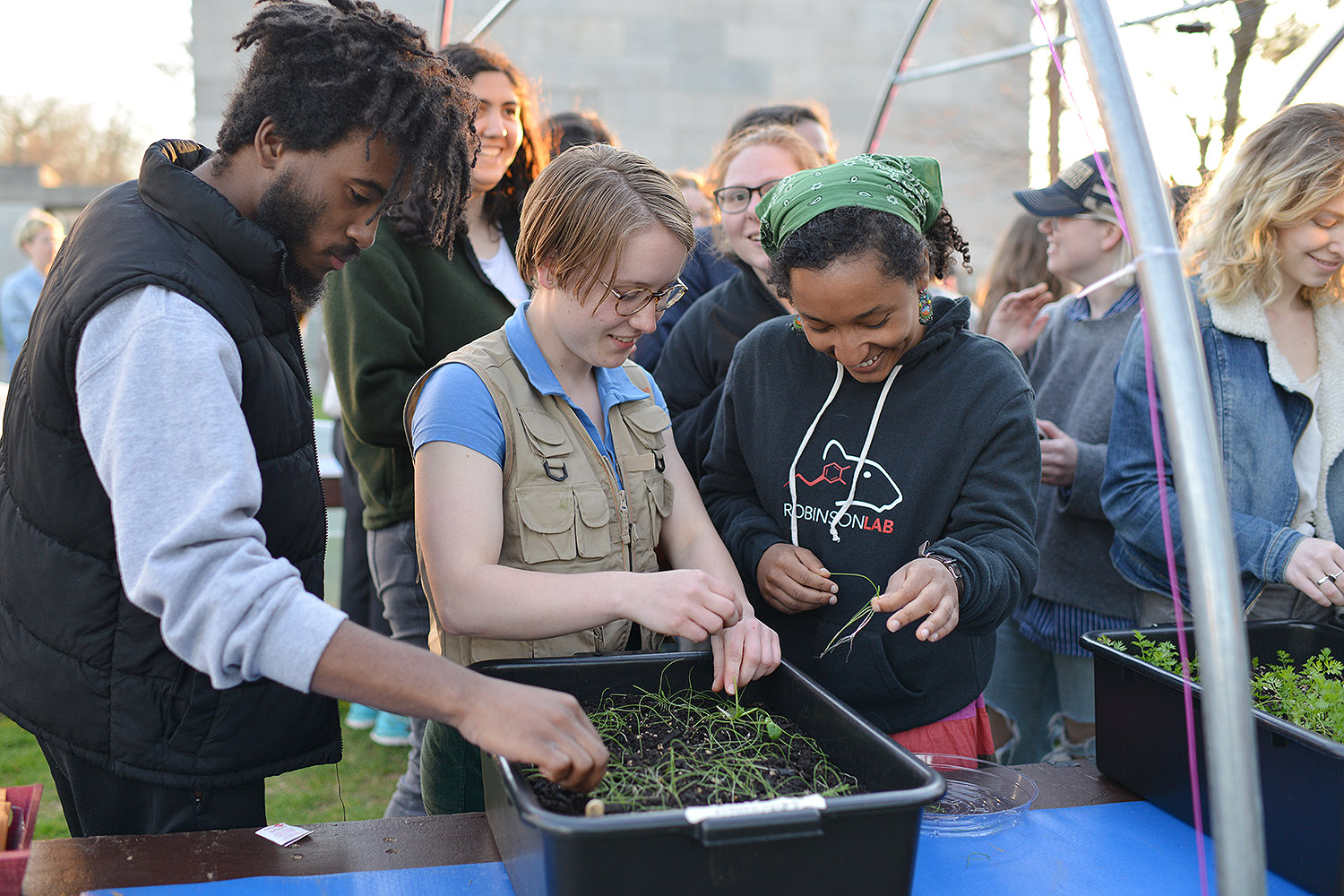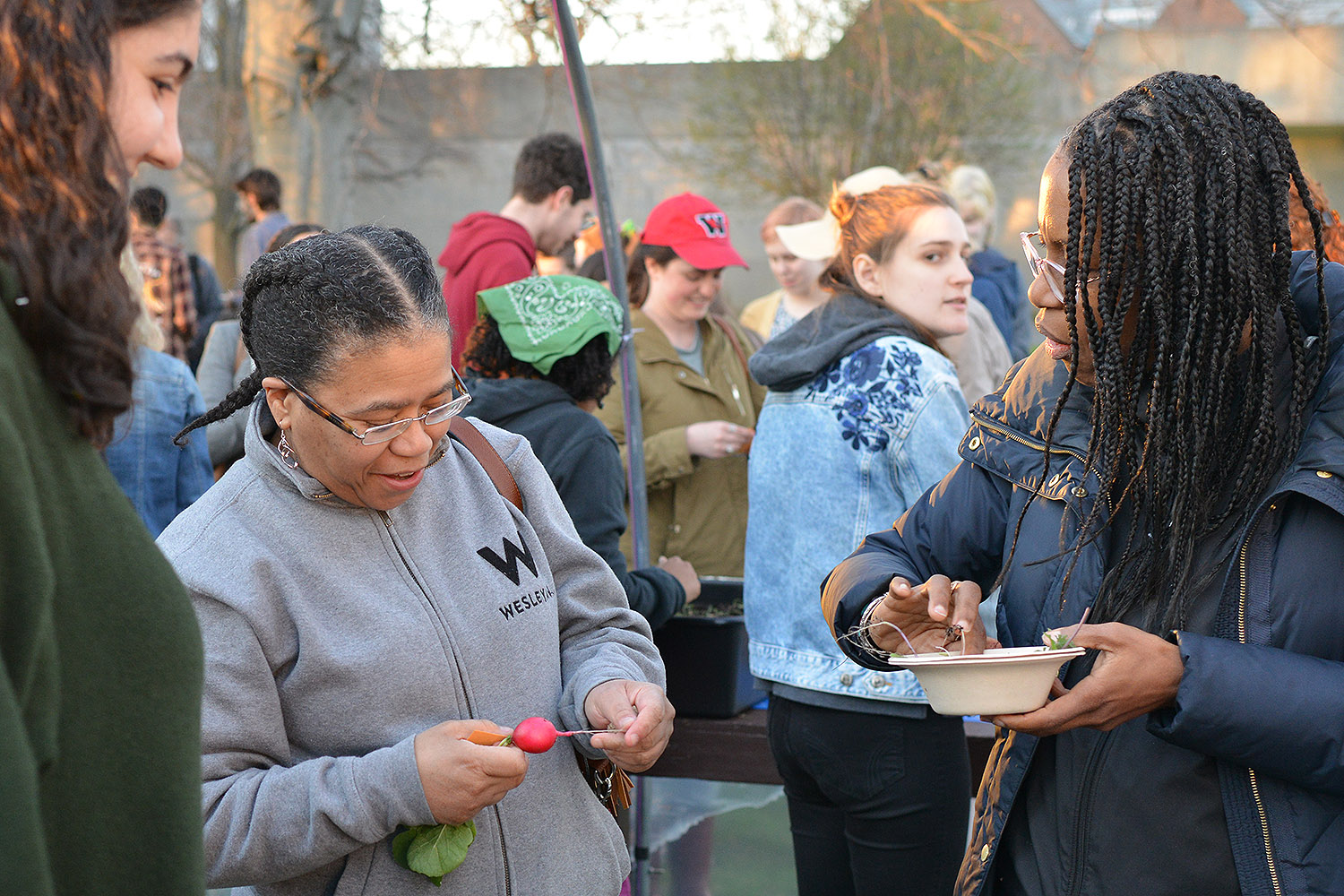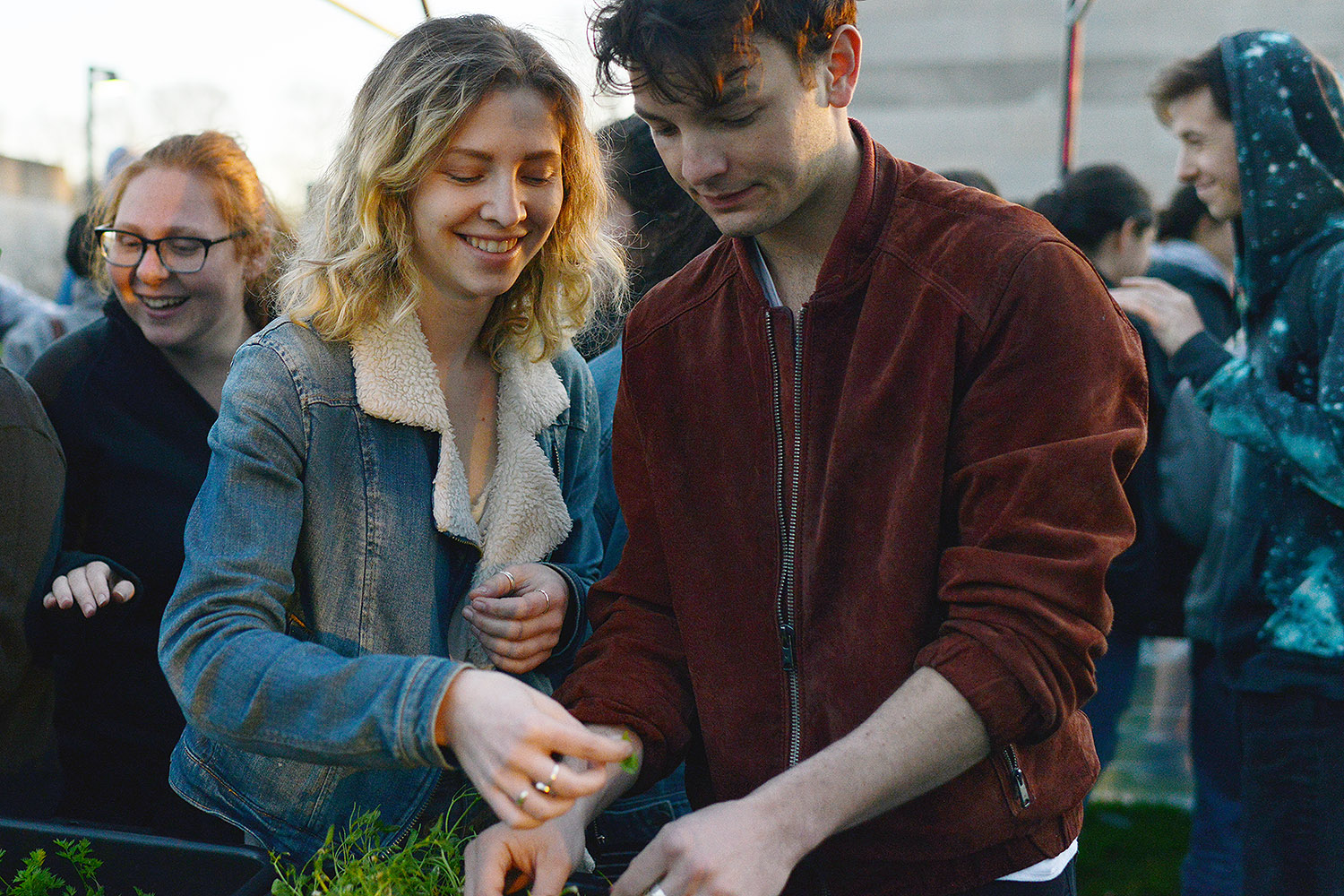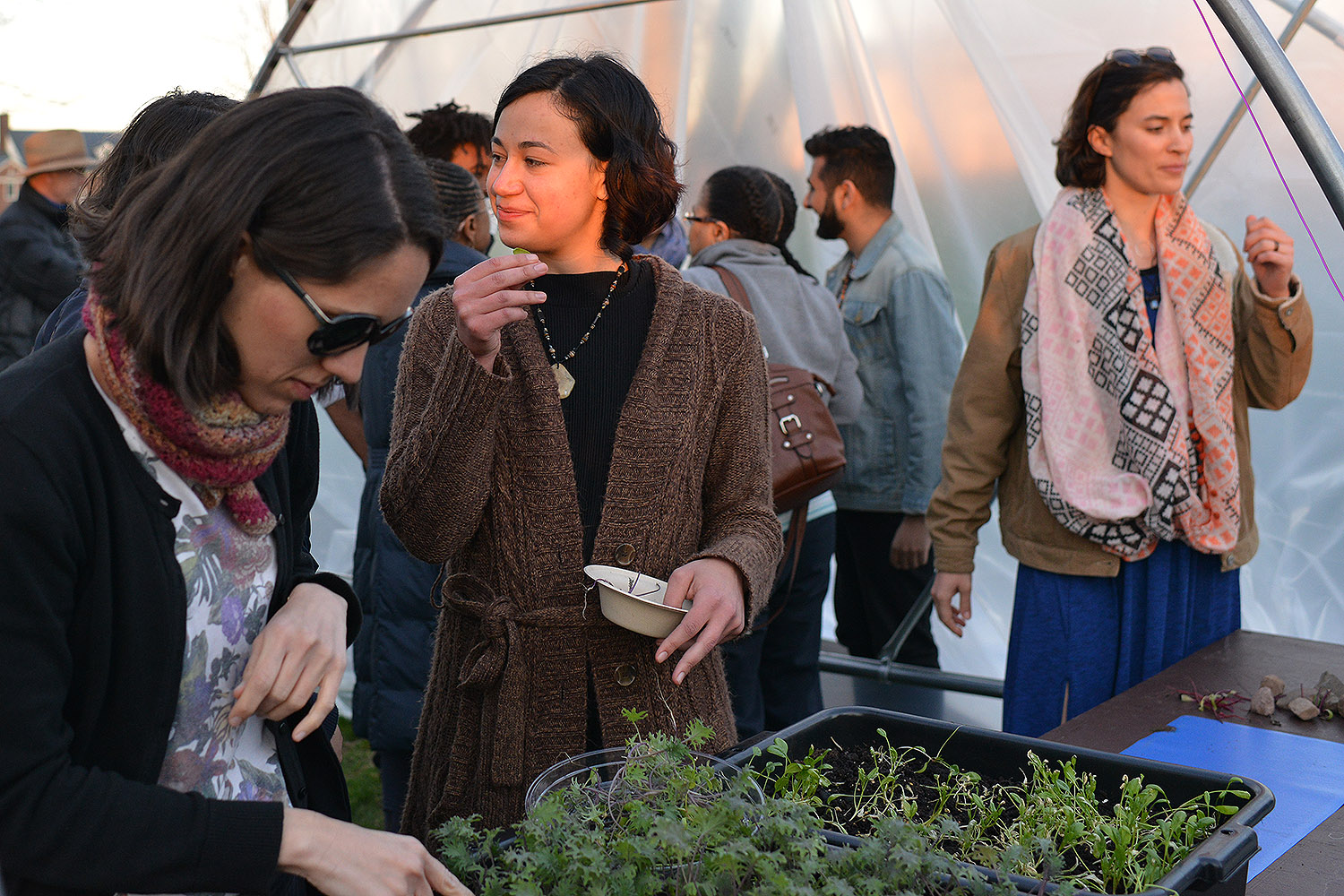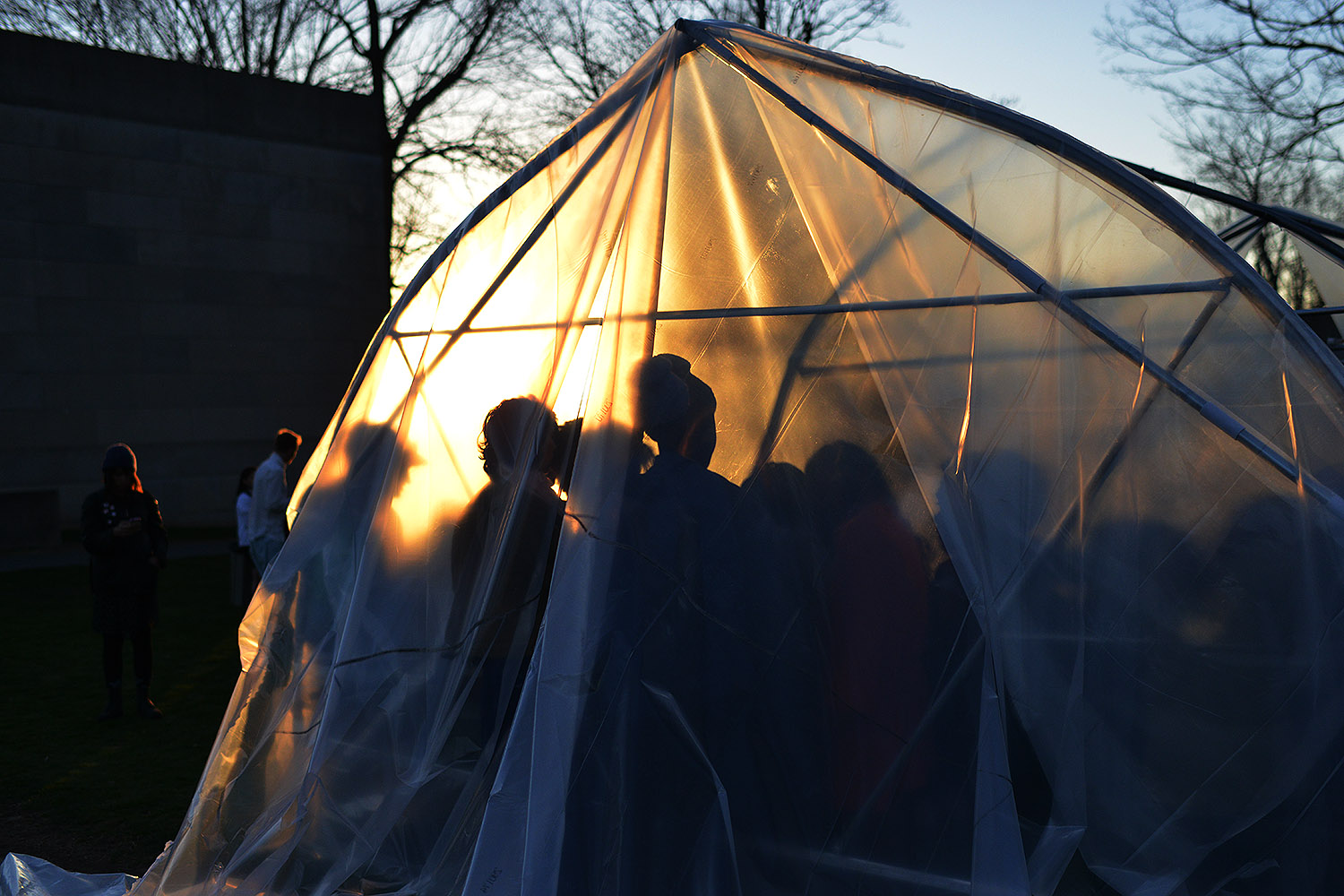Paterson’s Senior Thesis Explores Urban Farming, Communal Activity, Performance
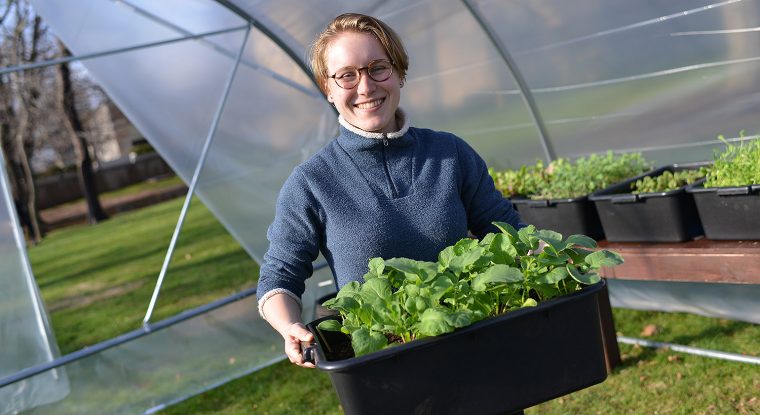
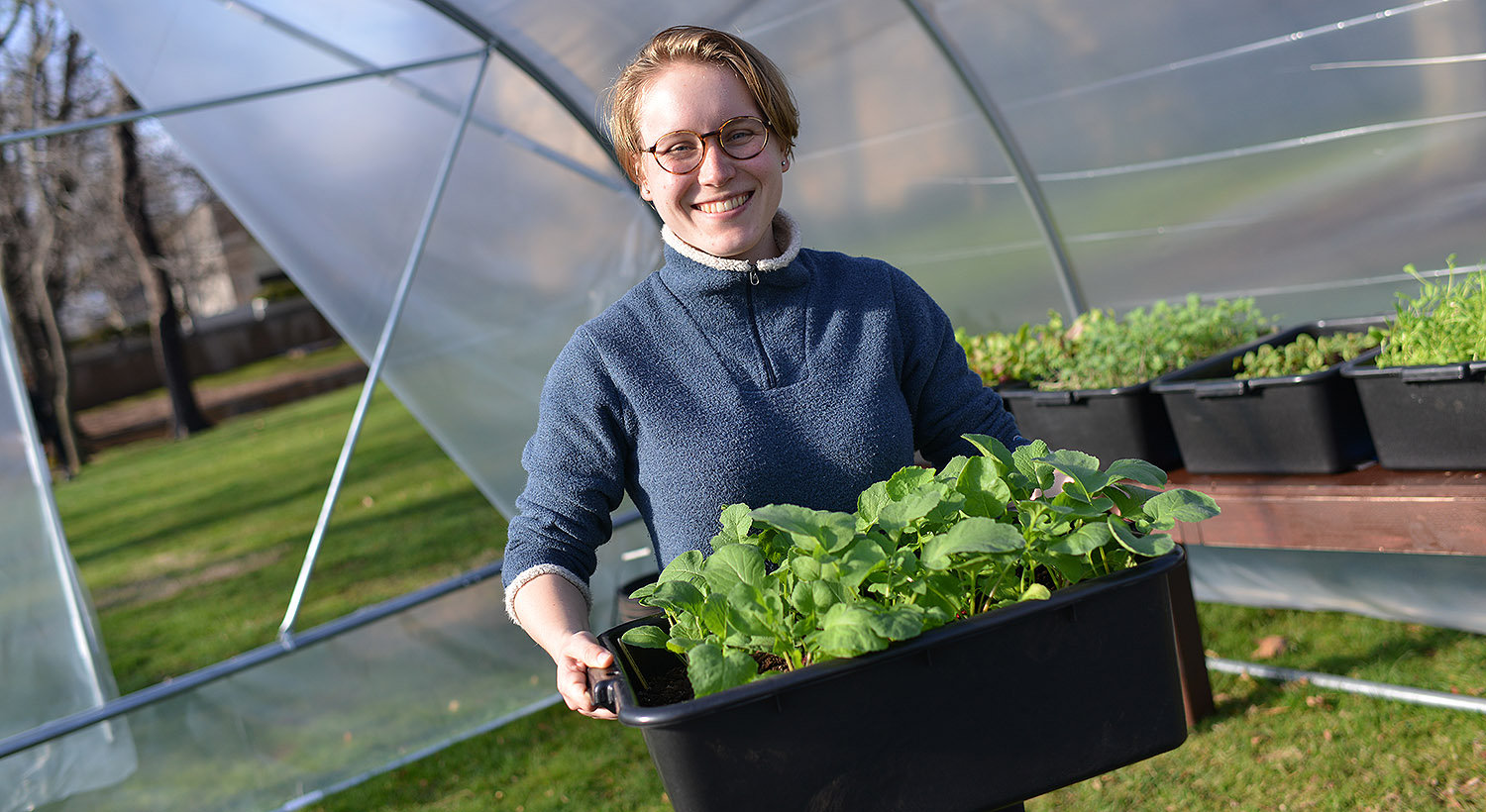
Senior Katherine Paterson’s passion for theater and environmental studies has grown over the past two months while she constructed a greenhouse for an honors thesis that explores and links together urban farming, communal activity, and theater.
On Earth Day, April 22, Paterson presented (at)tend, a durational performance of song, poetry, and spoken word, which unfolded over the course of the spring semester. The project involved the collective construction, seeding, and tending of a greenhouse by students and community members, and culminated with a spring harvest.
“The goal of the project was to serve as an experiment in creative place-making—in creating a space that the larger Wesleyan community helps to build and maintain,” she said. “A greenhouse containing living plants brings people together and links them with one another and their environment.”
The thesis also explored the questions, “Where does our food come from? How does it grow? How does changing our relationship to food affect our interactions with one another and with our environments?”
Paterson’s advisor is Katherine Brewer Ball, assistant professor of theater. The project was sponsored by the Wesleyan Green Fund, the Department of Theater and the College of the Environment.
A photo essay of the thesis project is below (photos by Olivia Drake MALS ’08):
Feb. 29: Paterson kicked off the project inside a cold frame at Long Lane Farm. Cold-frame structures allow gardeners to get a head start on the growing season. Students broke up compacted soil and filled large bins. Paterson taught fellow students how to plant seeds and mark containers.
During the summer of 2017, Paterson conducted field research in New York City (funded by a College of the Environment grant). She interned at Harlem Grown, an urban farm, and visited Swale, a floating food forest. The experiences helped shape and inform her thesis project.
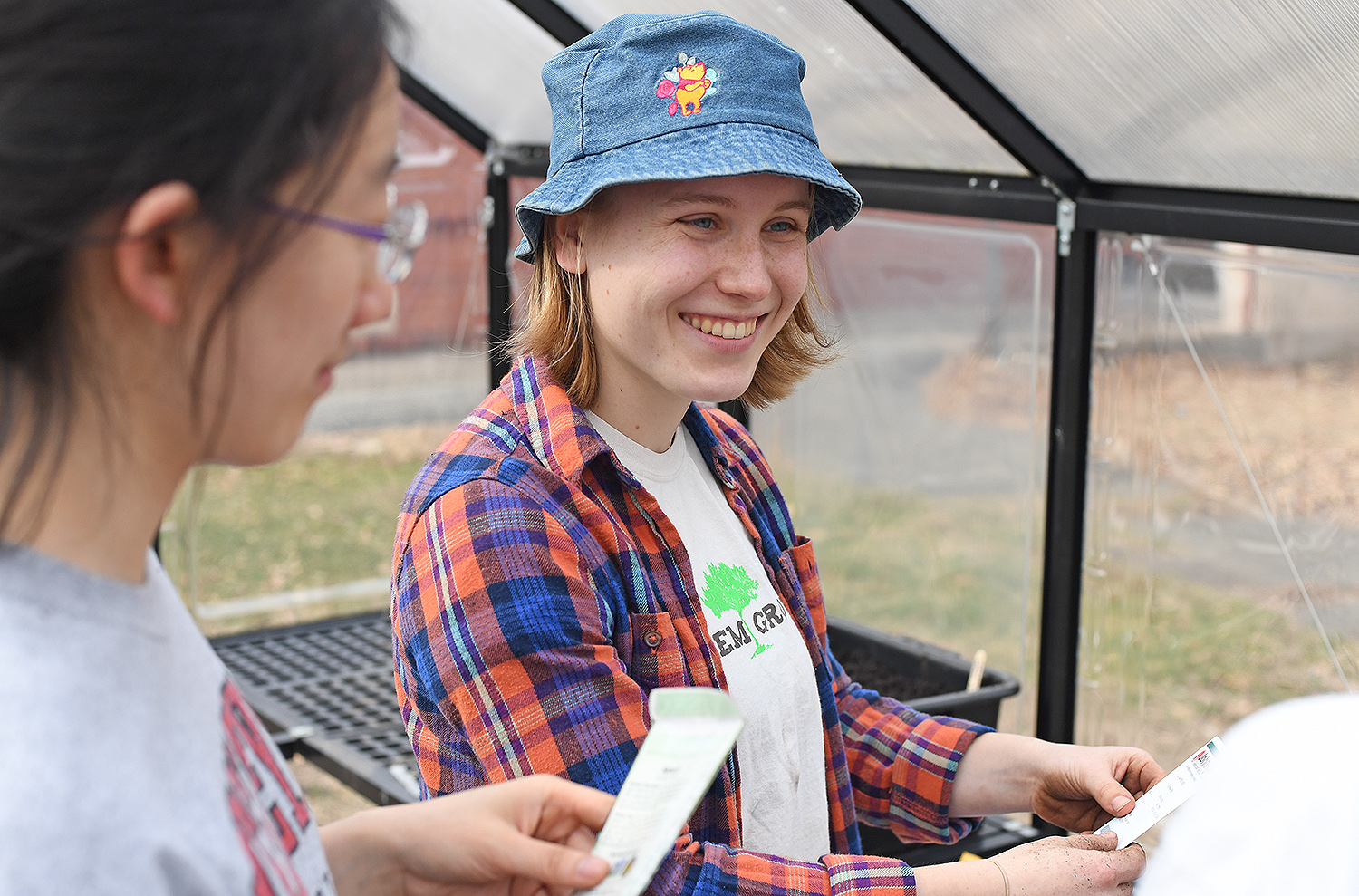
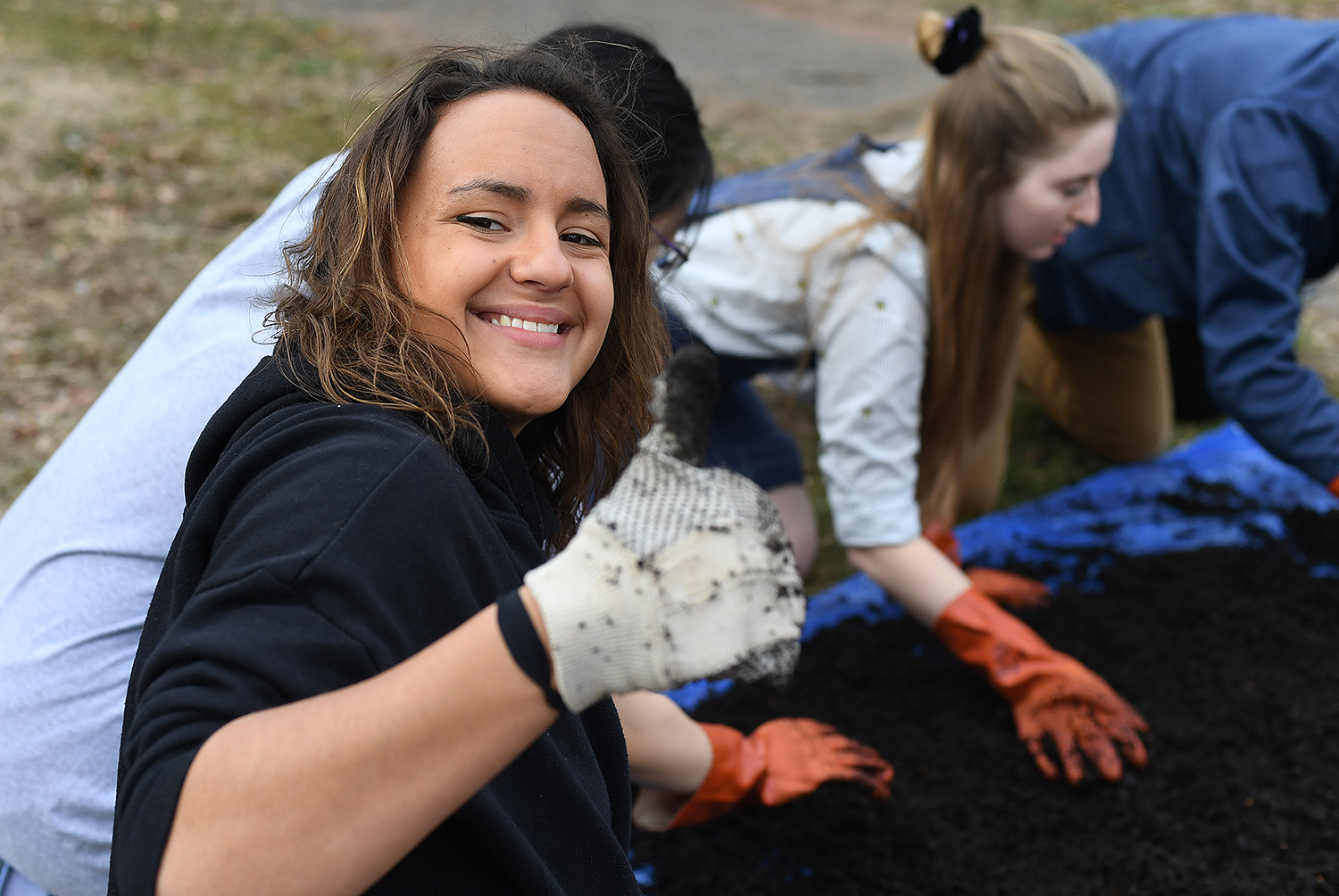
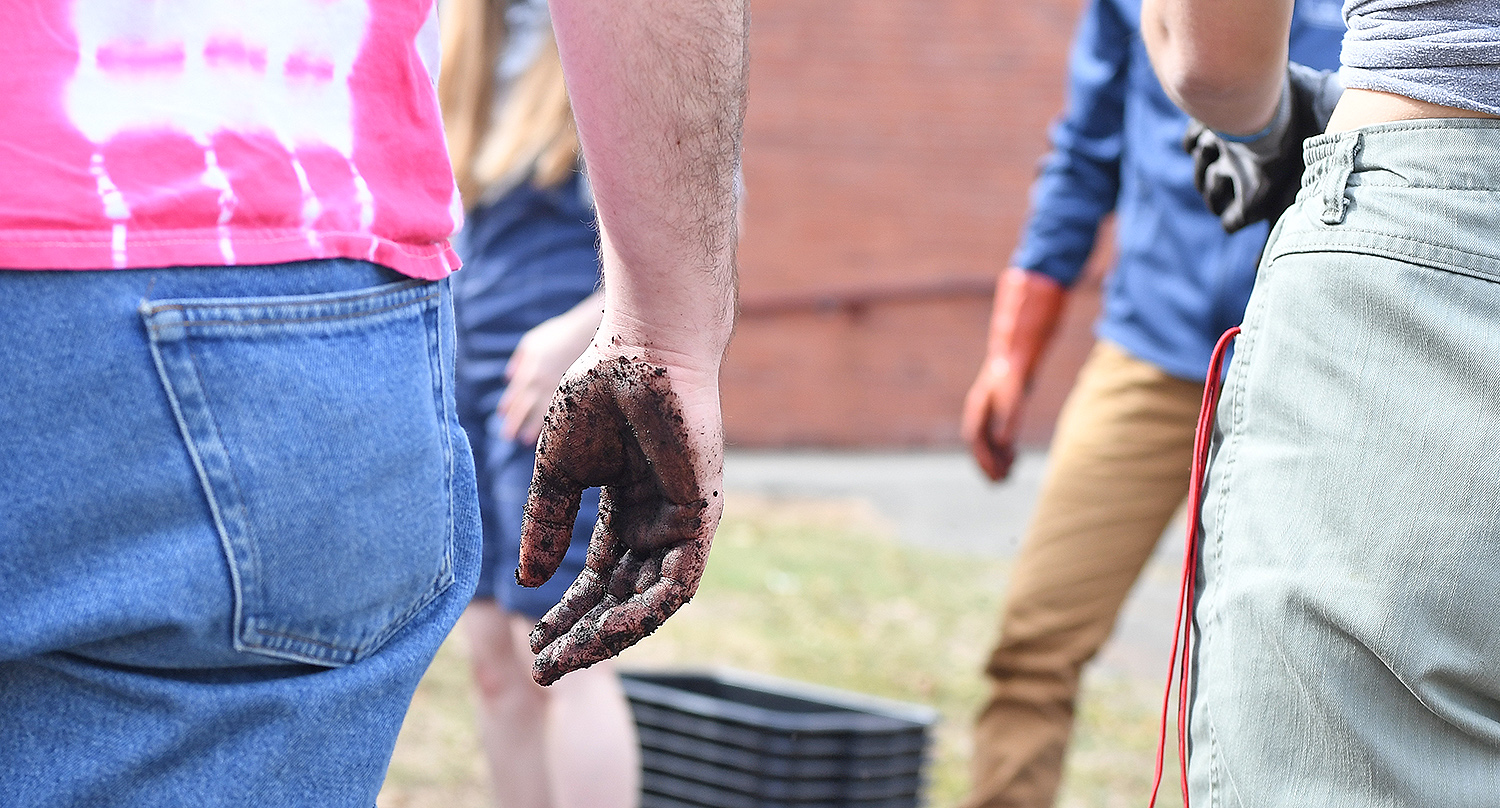
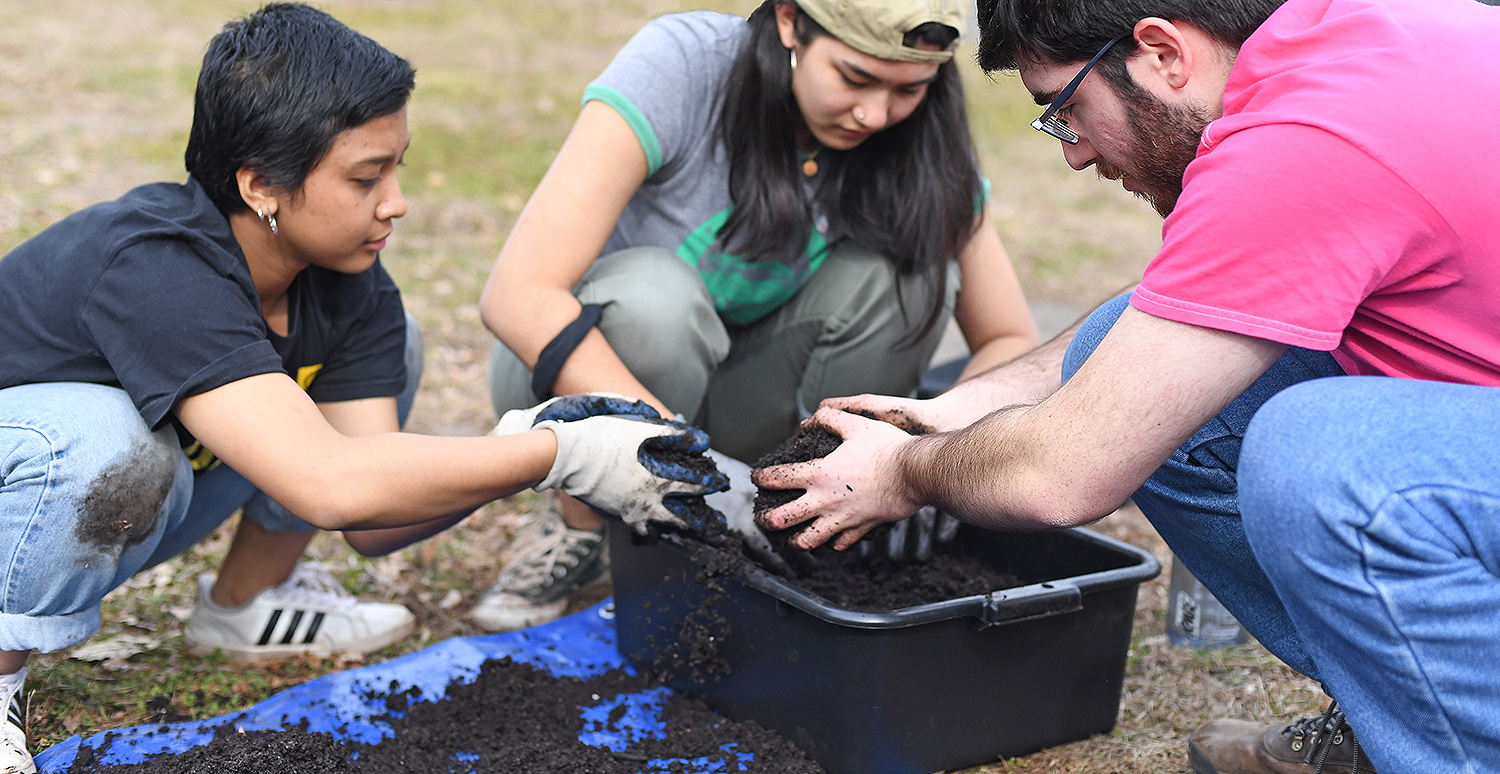
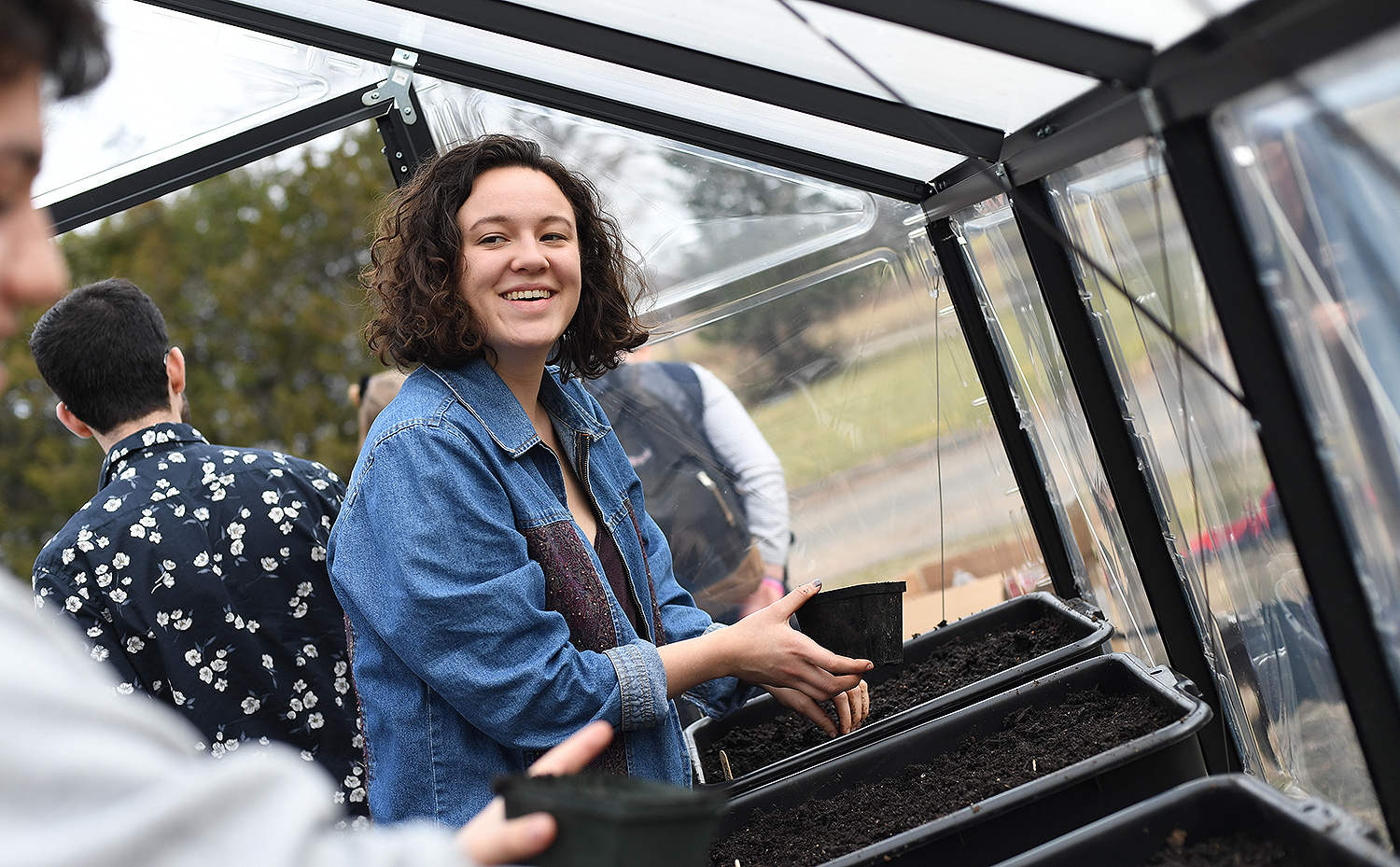
March 22: The group began construction of the greenhouse inside the theater department’s workshop. Rebecca Foster, technical director and production manager of theater, visiting assistant professor of theater, and Charlie Carroll, assistant technical director and scenery specialist for the Center for the Arts, assisted with the build and taught the students how to bend pipe, operate a drill press, use a vice to pinch metal, file metal, and use a spring-loaded center punch.
The greenhouse, which measures 14-by-16 feet, is constructed of more than 220 individual parts including metal pipes, clamps, carriage bolts, earth anchors, brace bands, “wiggle wire,” grade stakes, and thick plastic film. The parts were purchased separately and amounted to approximately $900.
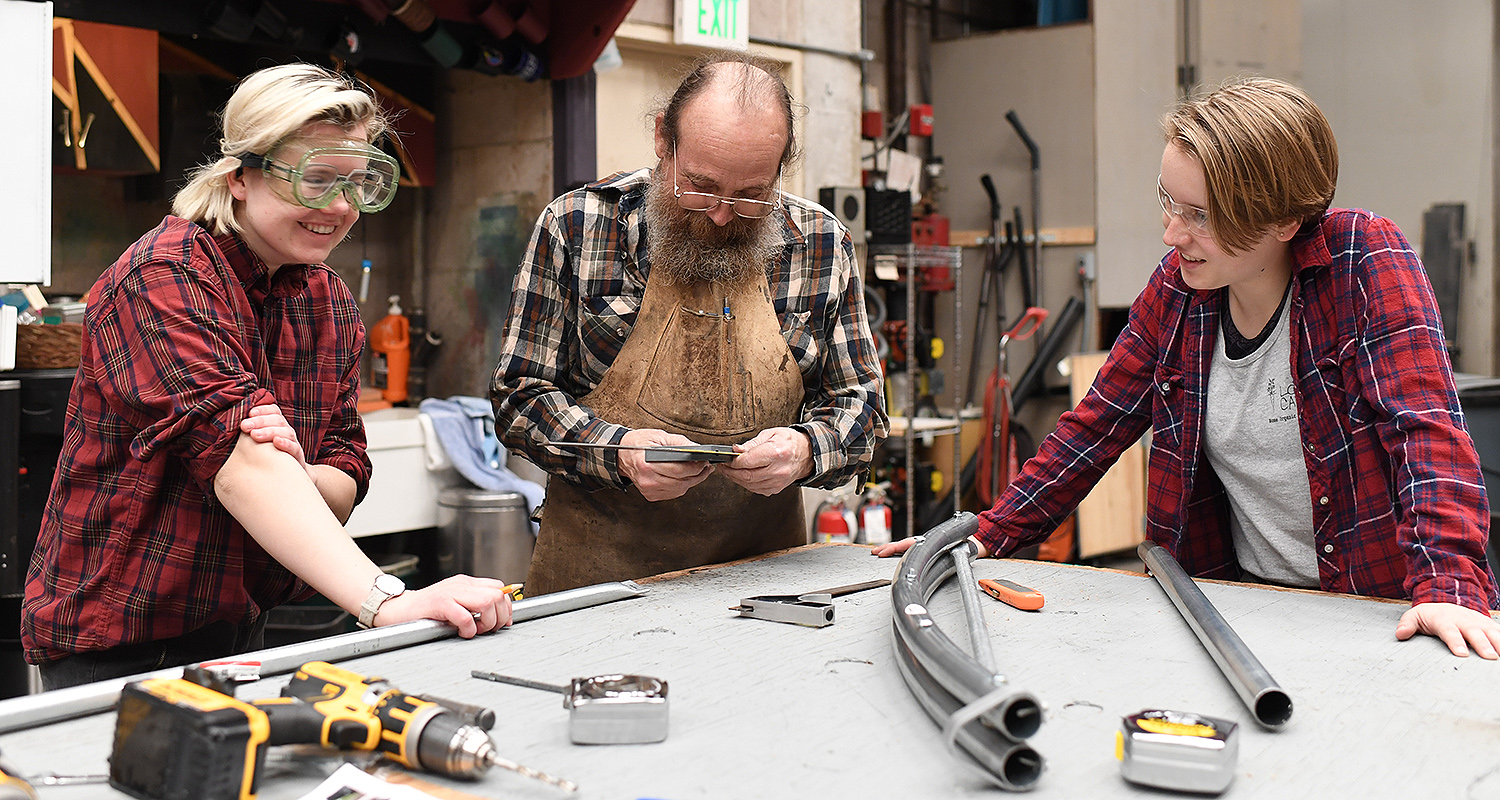
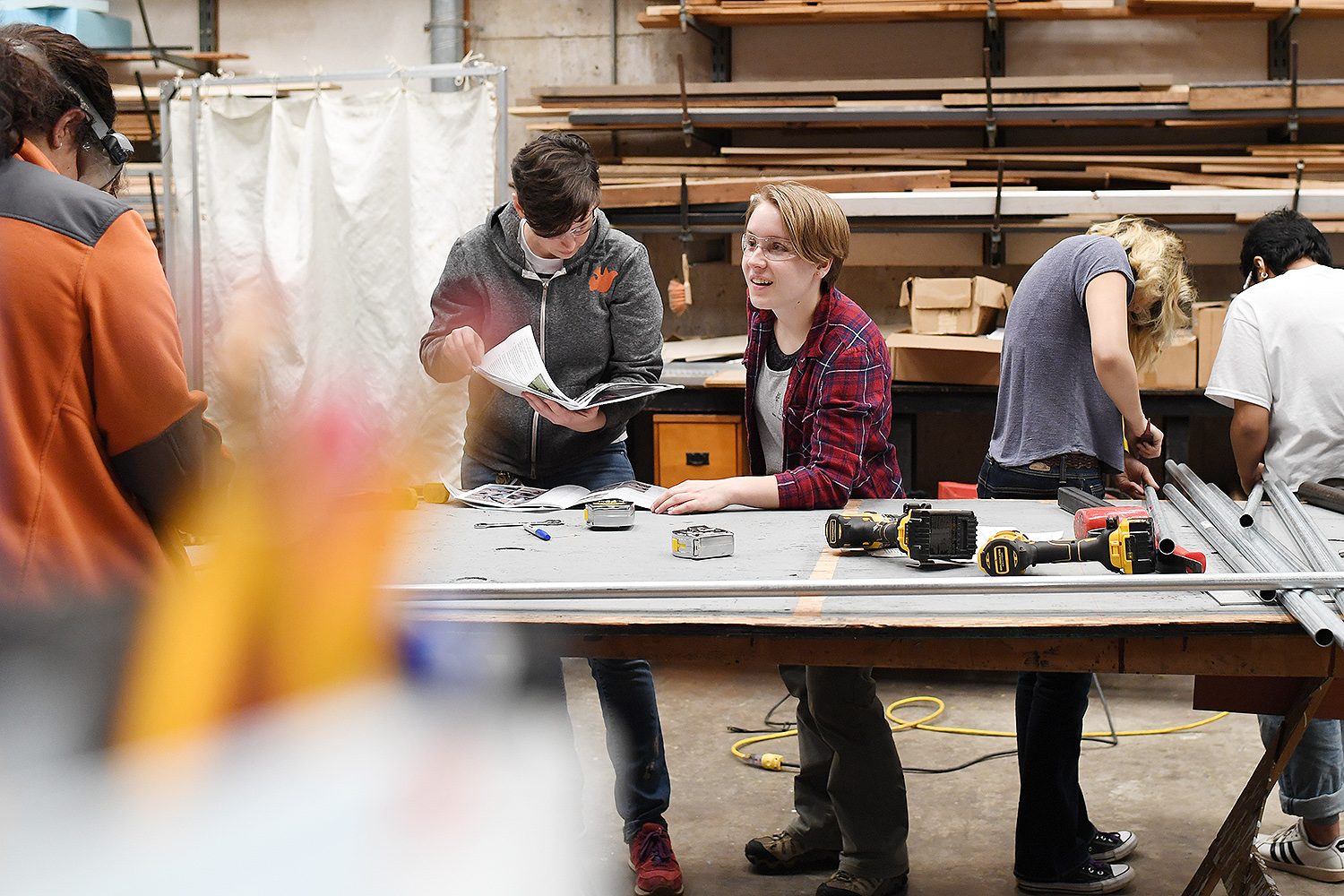
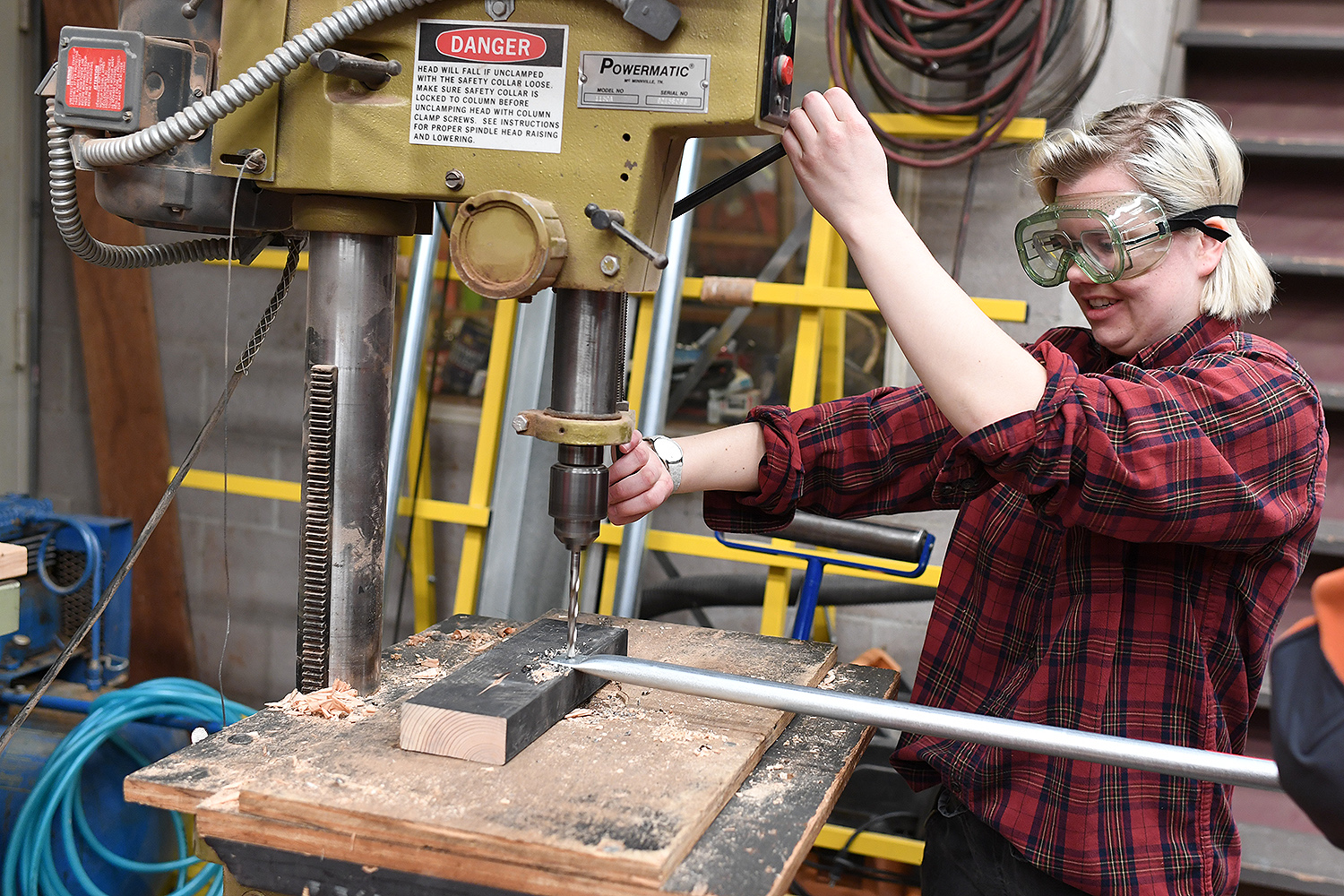

March 27: The students began erecting the modular, cathedral-style greenhouse on the Center for the Arts green—a site Paterson personally picked to house her plant palace. The structure also served as a stage for the Earth Day performance.
“I wanted a space that is central and that Wesleyan community members walk by often on their way to and from class/Usdan,” Paterson said. “I am interested in people walking past living vegetable plants on their way to eat food. The CFA green is a great location for this project since it sees a lot of foot traffic and sunlight. It also enables an interesting artistic conversation because the CFA houses many indoor studio spaces, and the greenhouse will act as a sort of outdoor studio.”
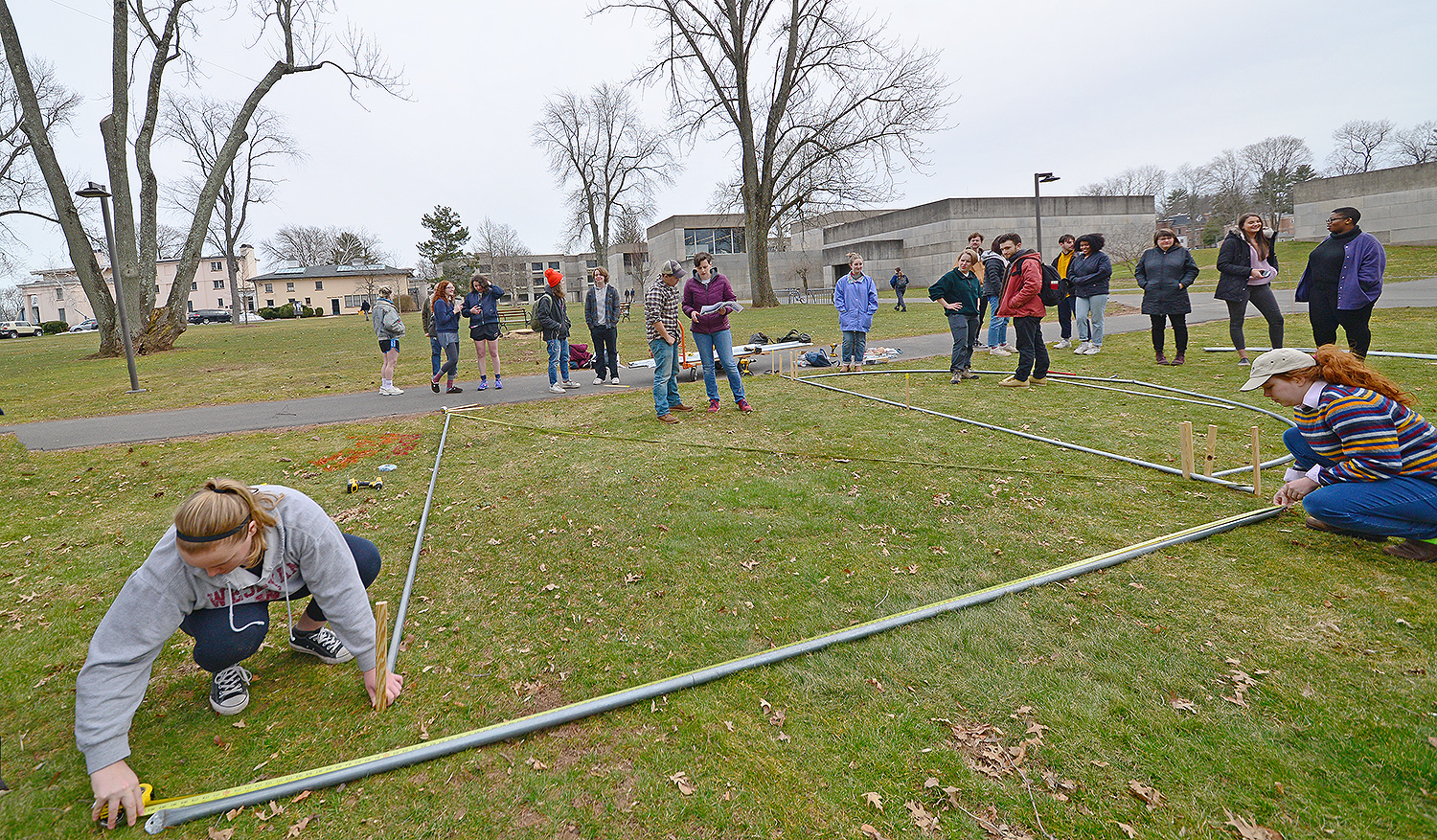
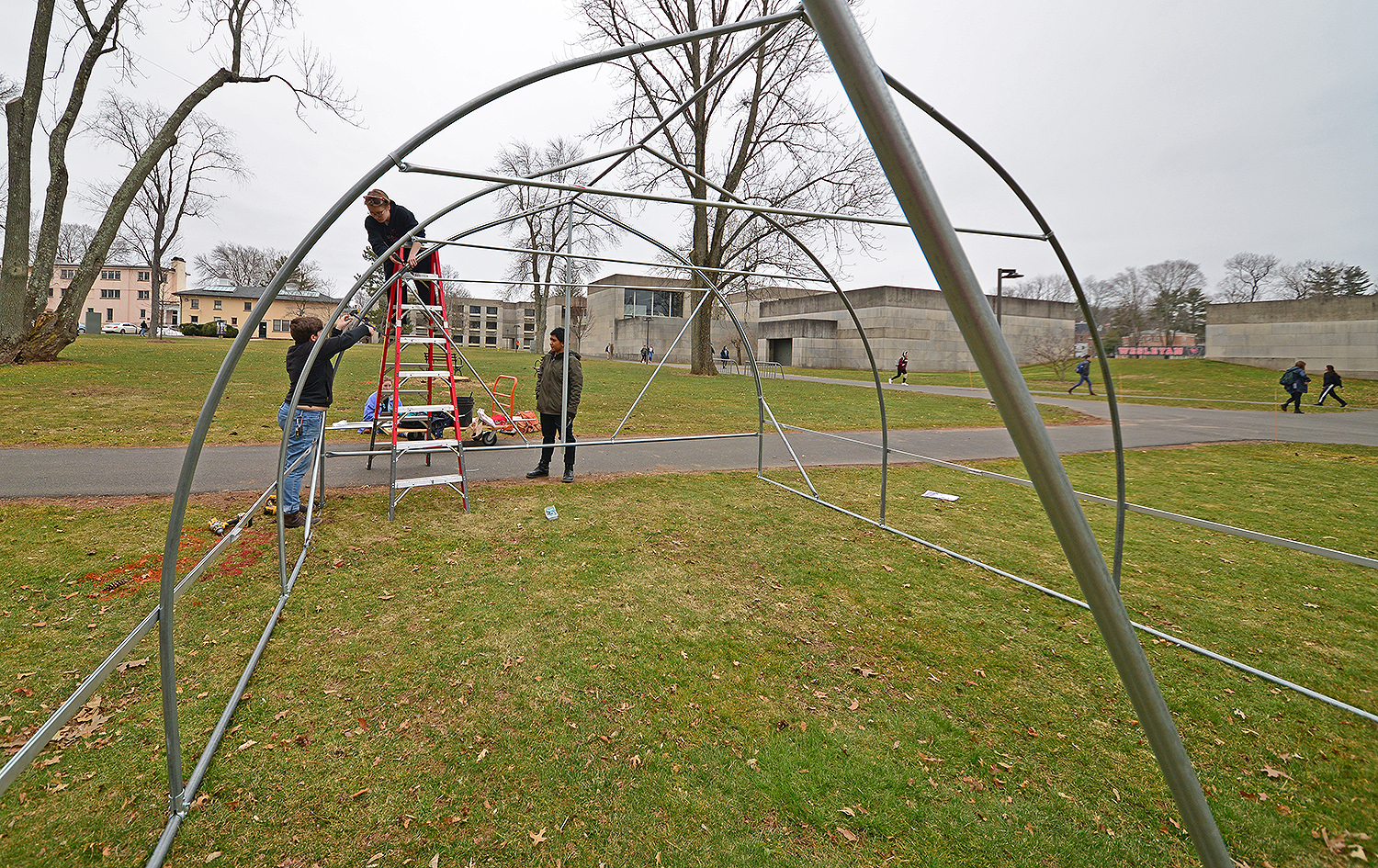
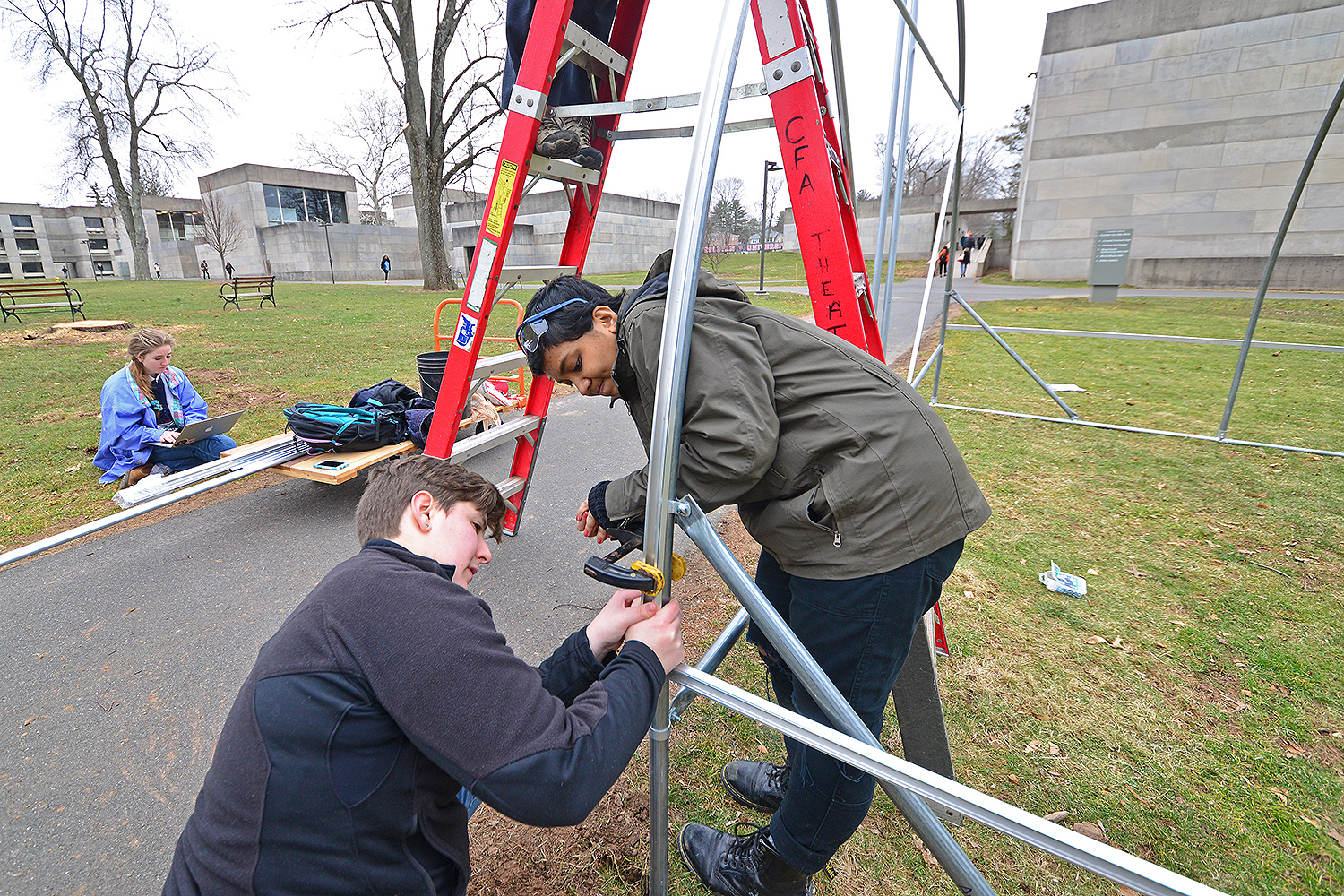
April 16: The students moved the seedlings into the completed greenhouse. The plant trays, containing red-veined sorrel, bunching onions, carrots and carrot greens, spinach, red Russian kale, stir-fry mix, radishes, beet greens, and claytonia, sat atop heated mats in the event of cold weather. The plastic “veggie wrap” is rated for 115 mph of wind.
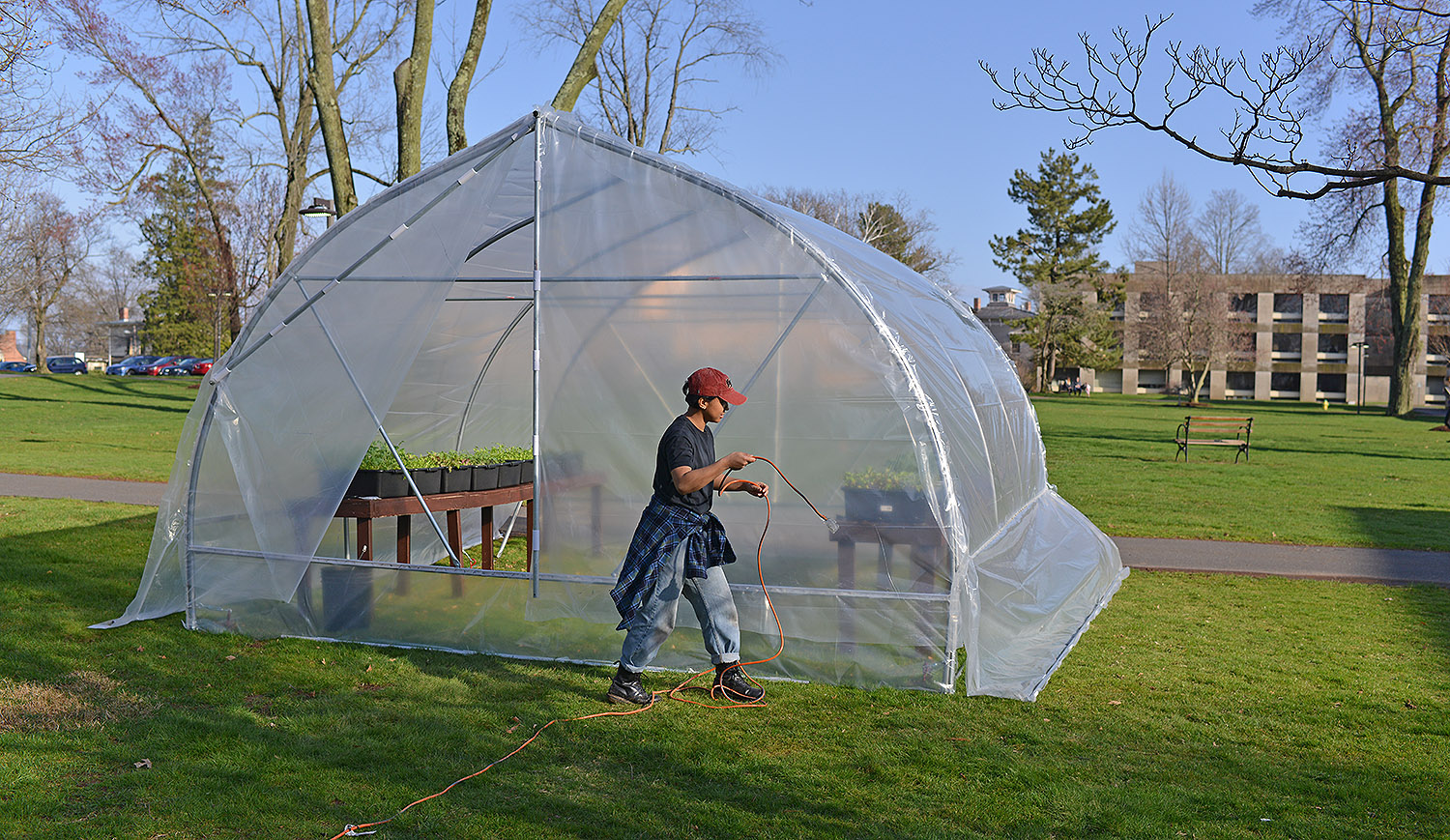
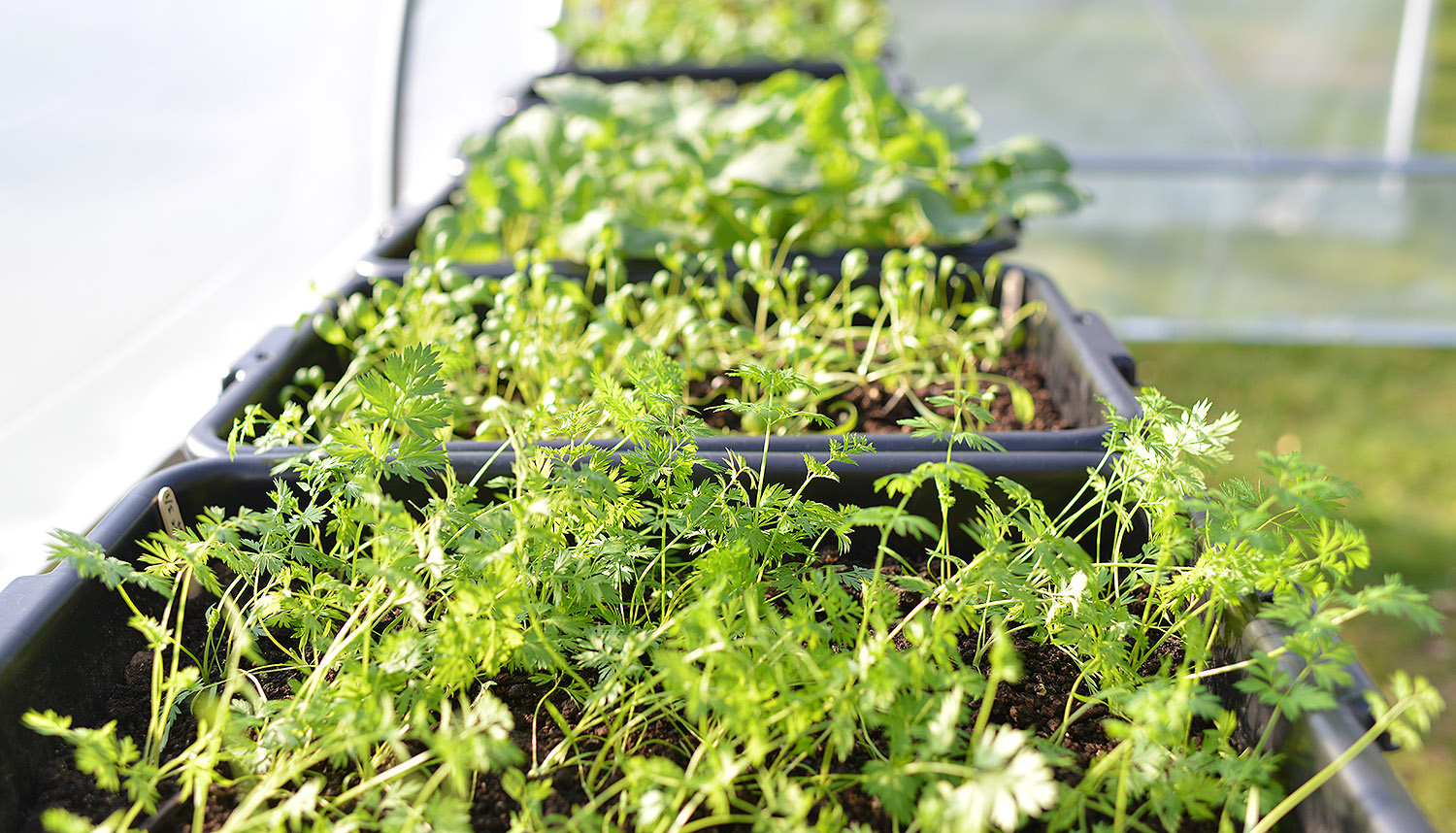
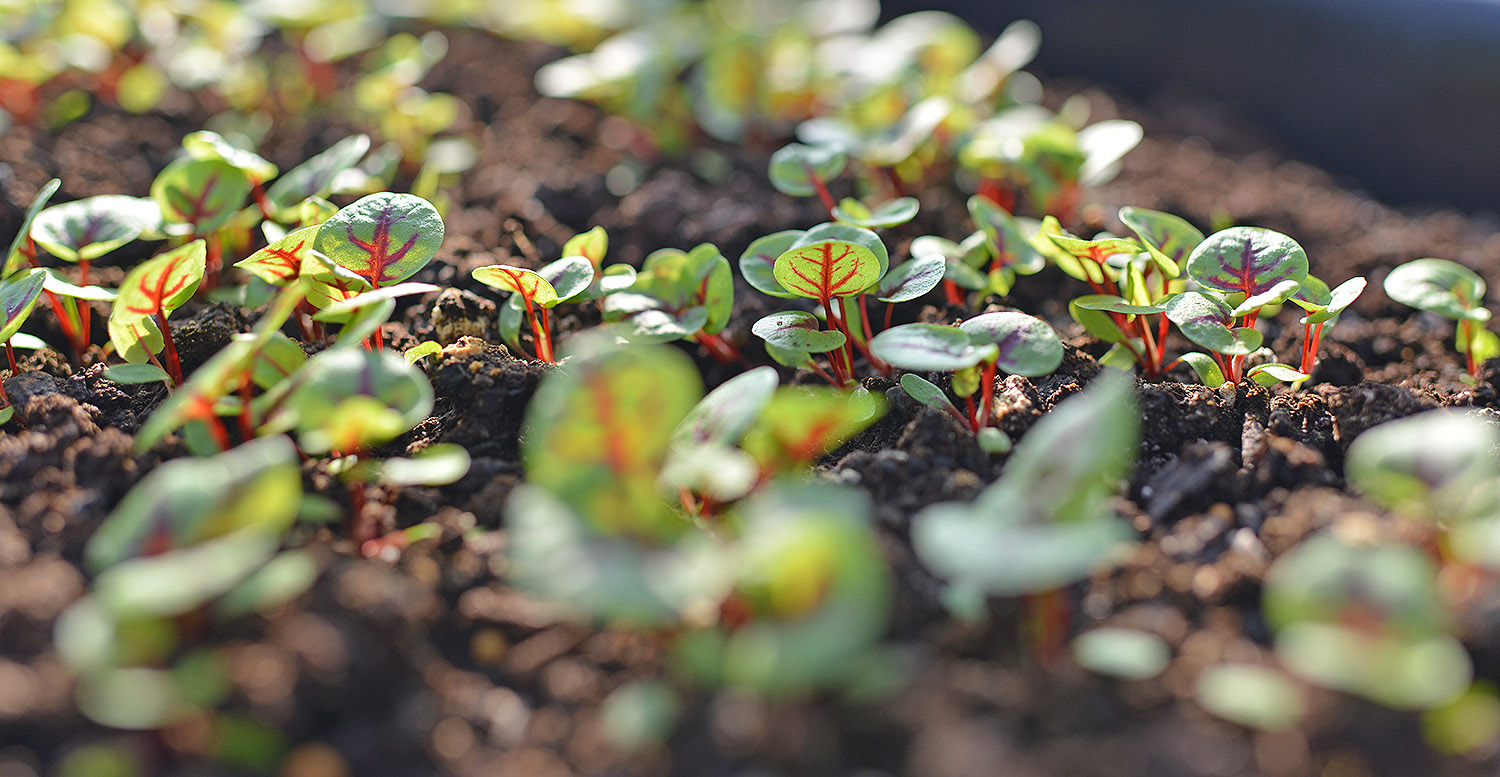
April 22: On Earth Day, Paterson debuted her thesis, which involved spoken text, song, poetry, performance, and audience participation. The cast included Paterson, Ona Hauert ’21, Amira Leila S. ’20, Bisa McDuffie-Thurmond ’19, and Samuel Morreale ’19.
“How do we get ‘audiences’ to participate in the doing? How can we see a performance as not an ending but a beginning? I ask these questions and am doing the project in this way because the connections we make with people and our environments through theater and farming are important and interesting to me,” Paterson said. “This process has been so much fun and I have learned so so much. It was so great to see so many people there. I felt such joy and warmth sharing the experience with everyone.”
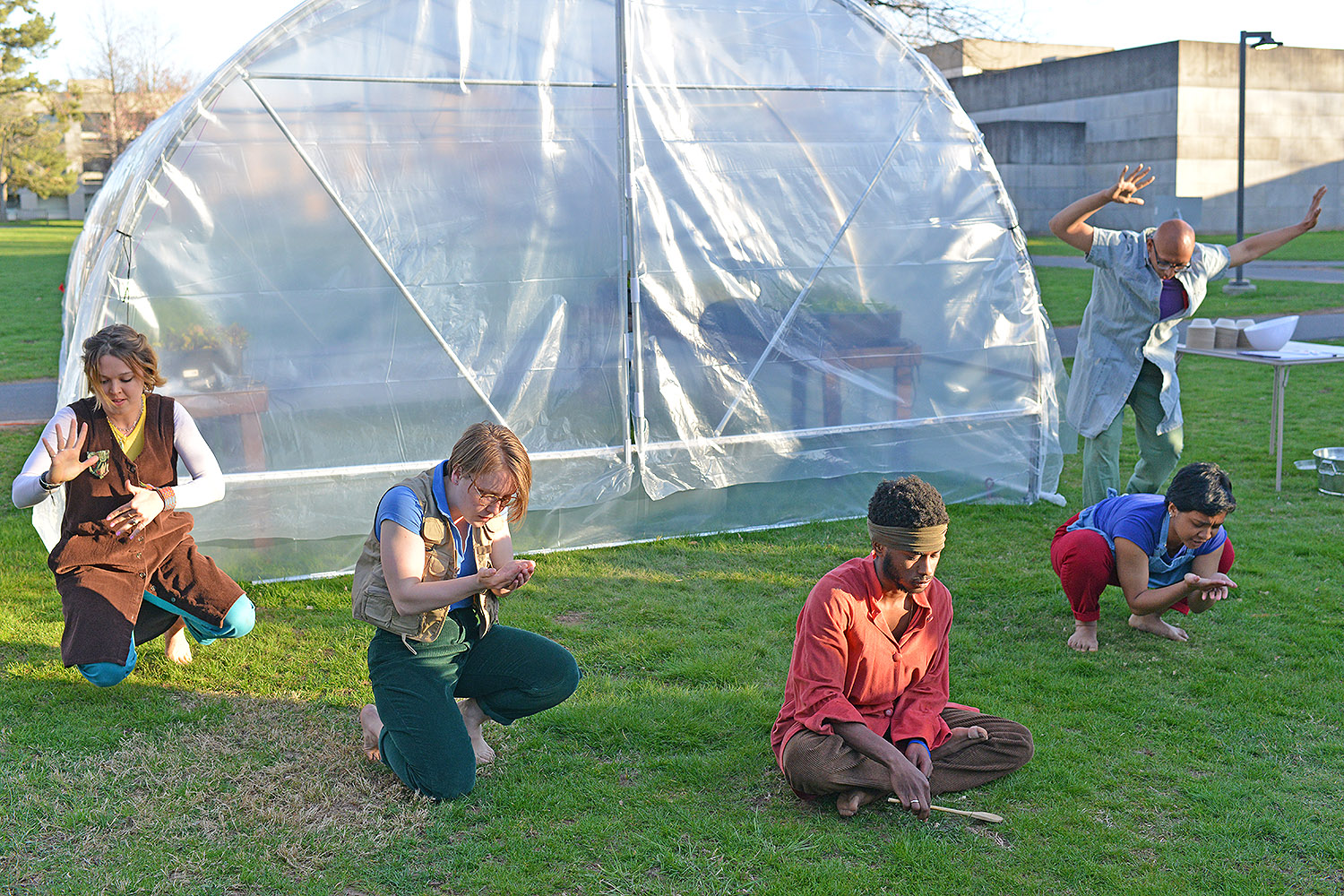
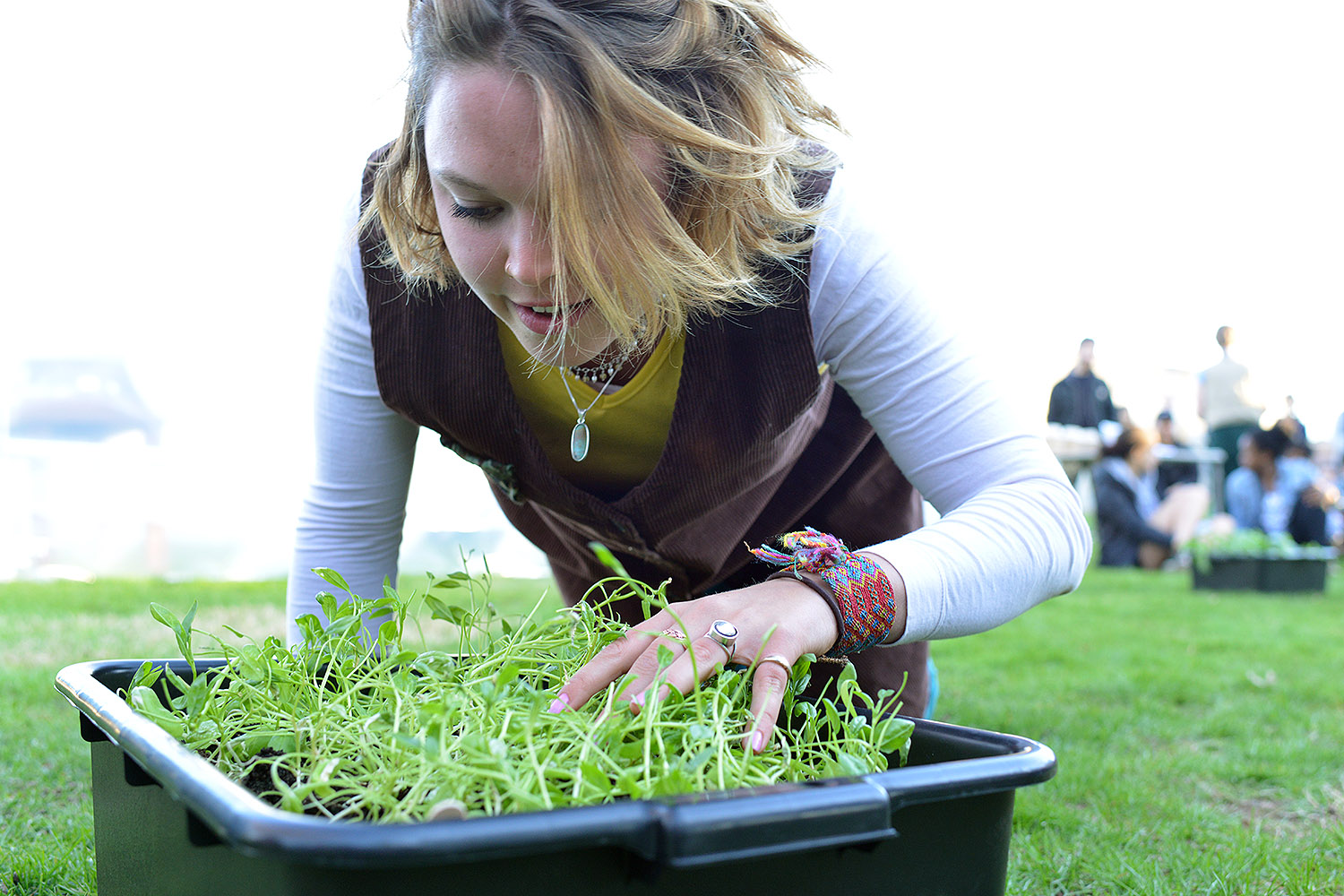
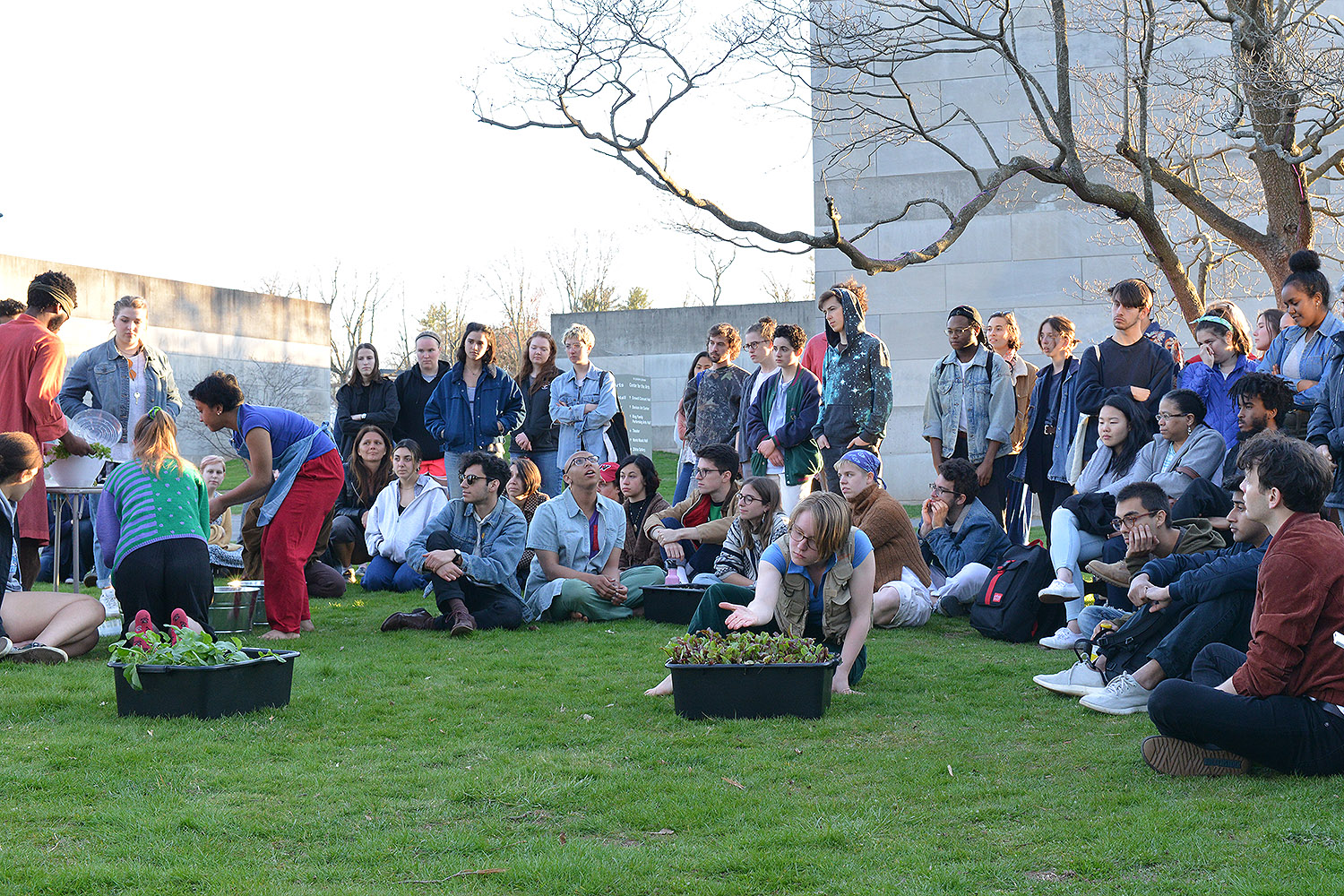
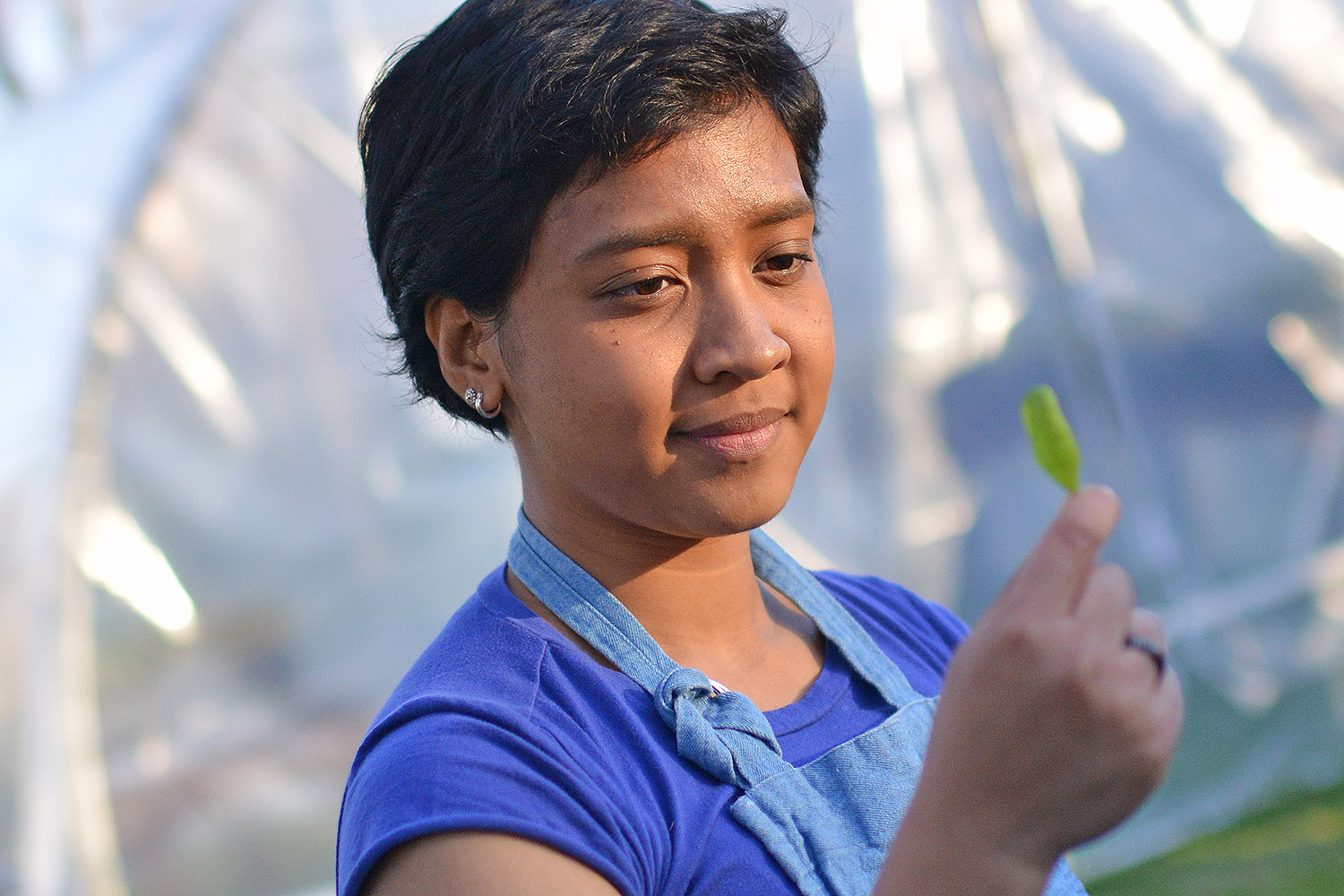
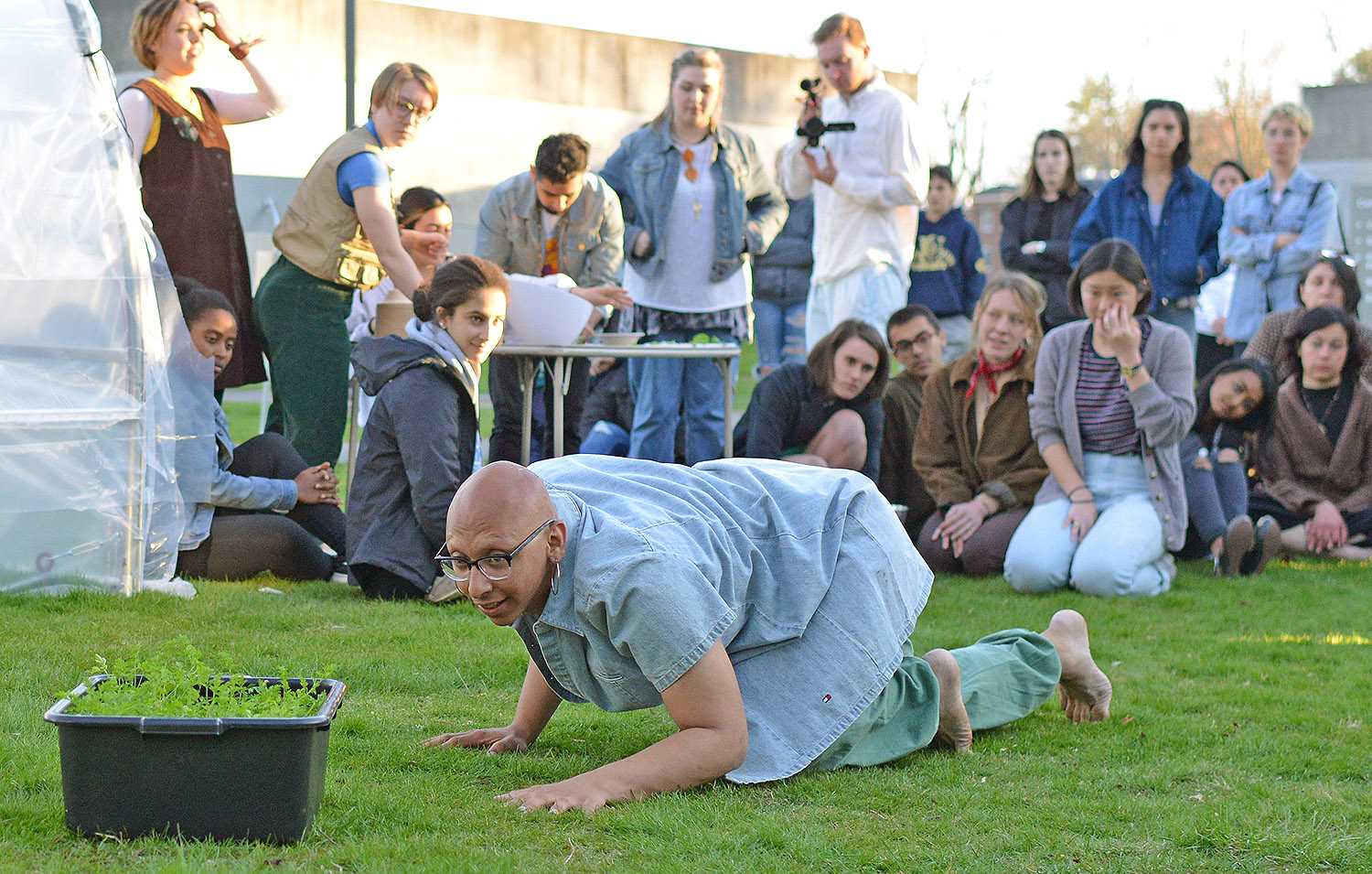
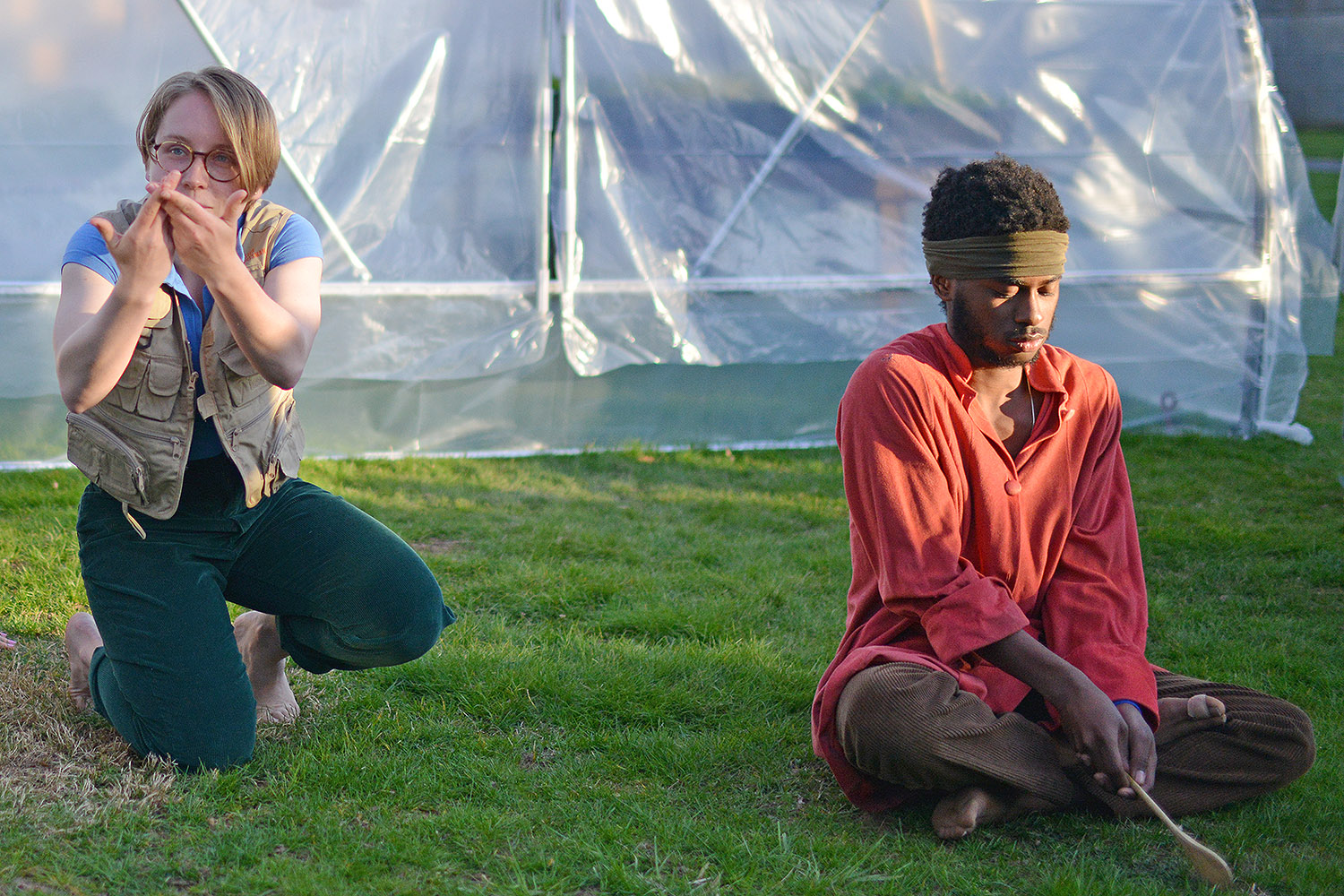
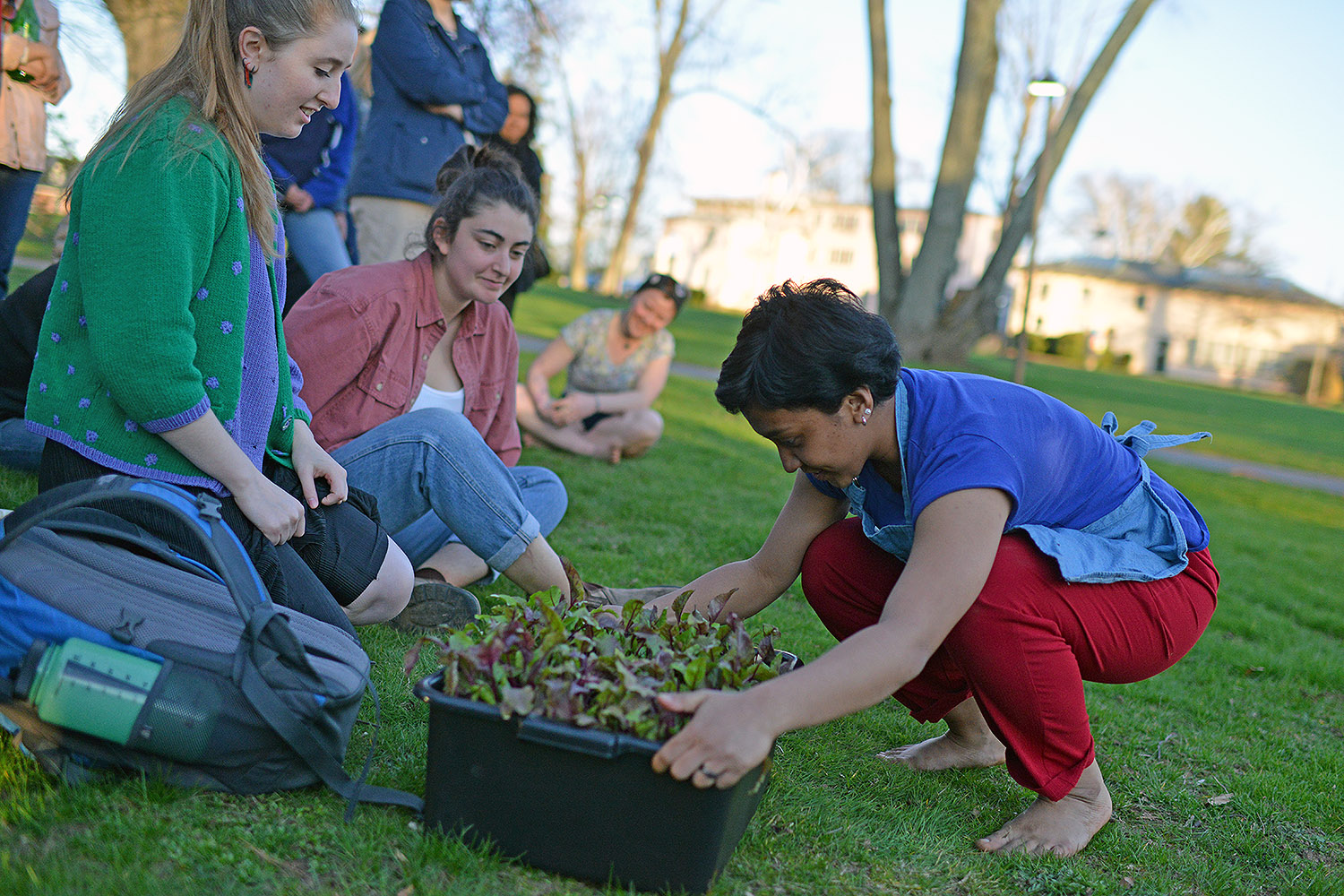
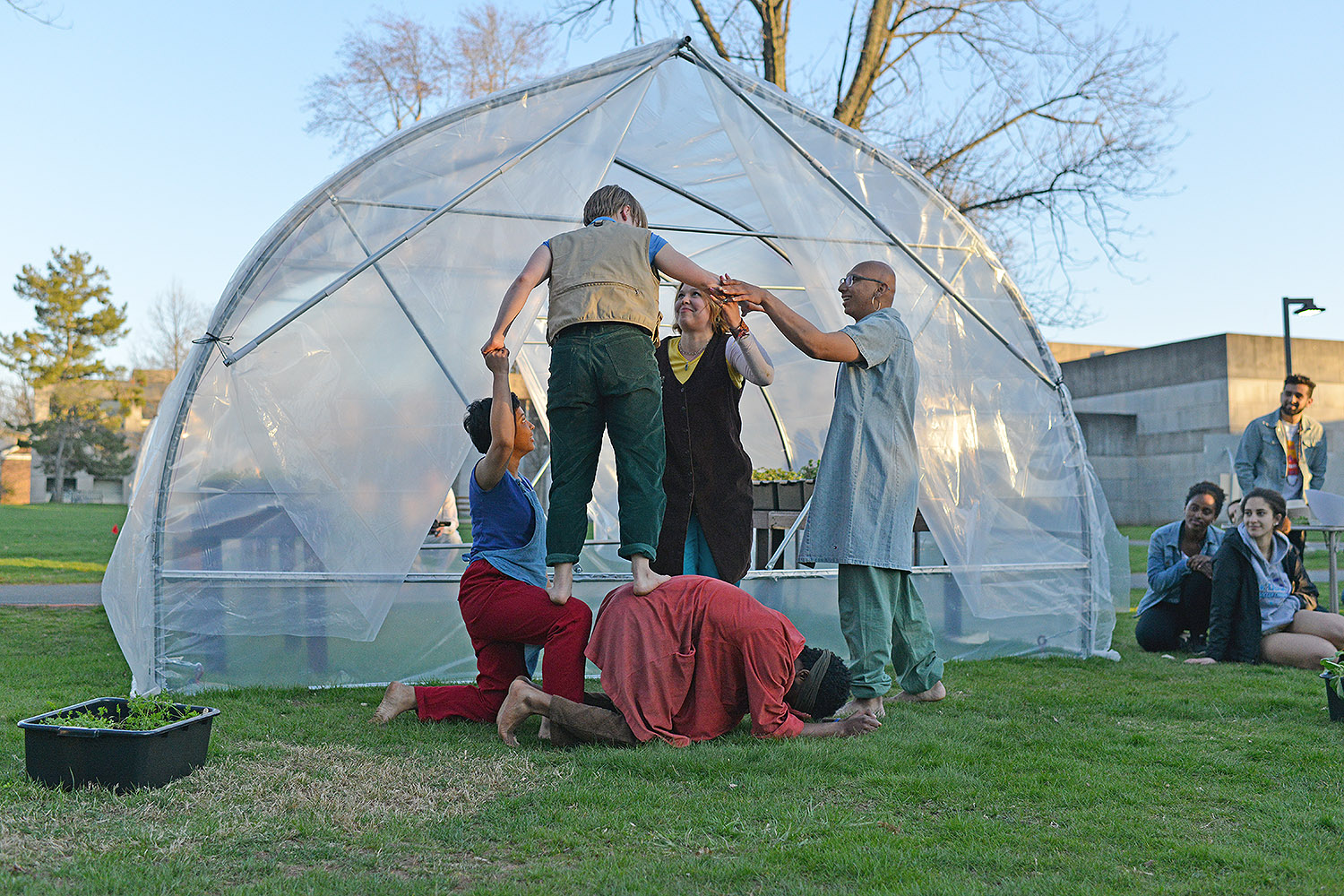
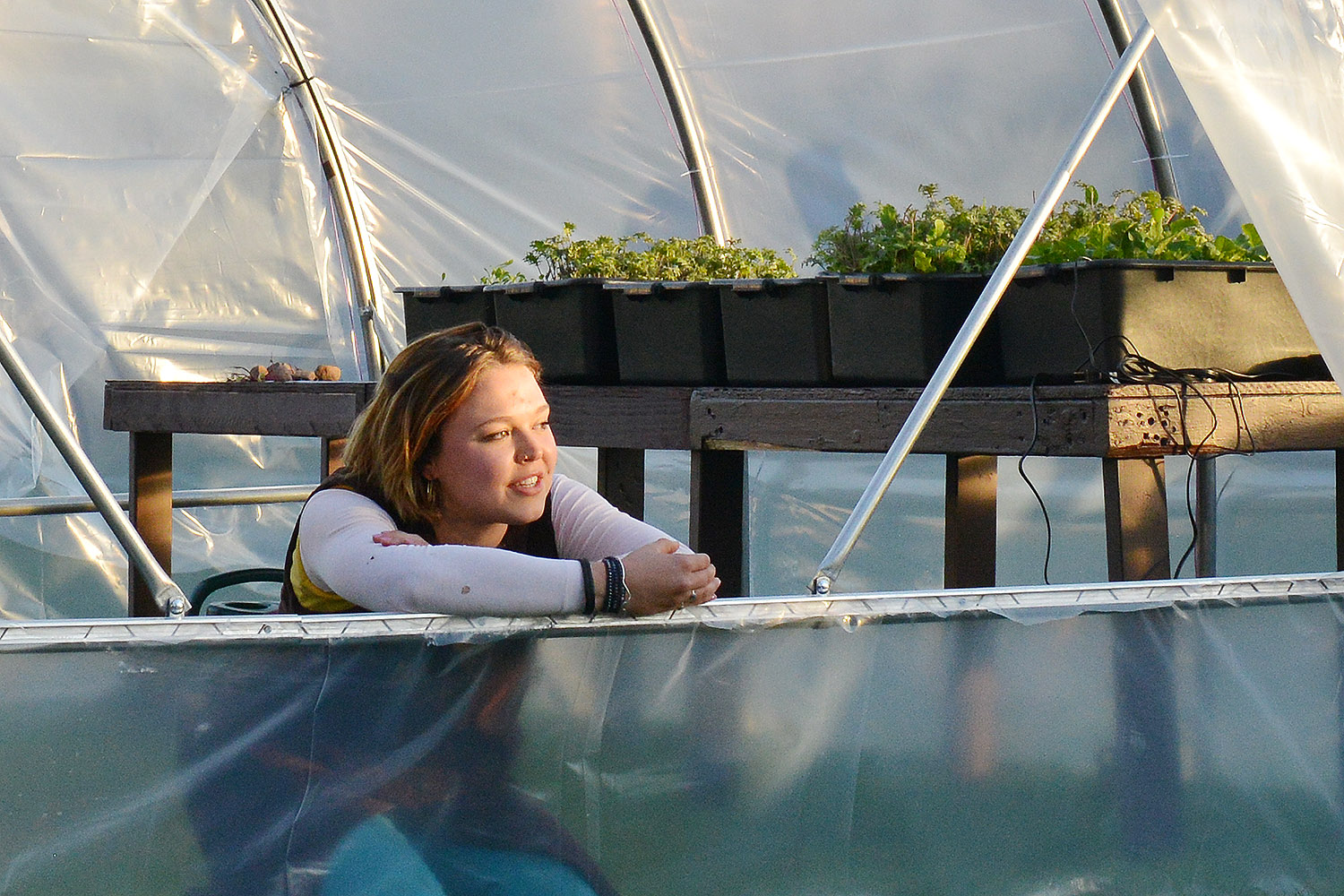
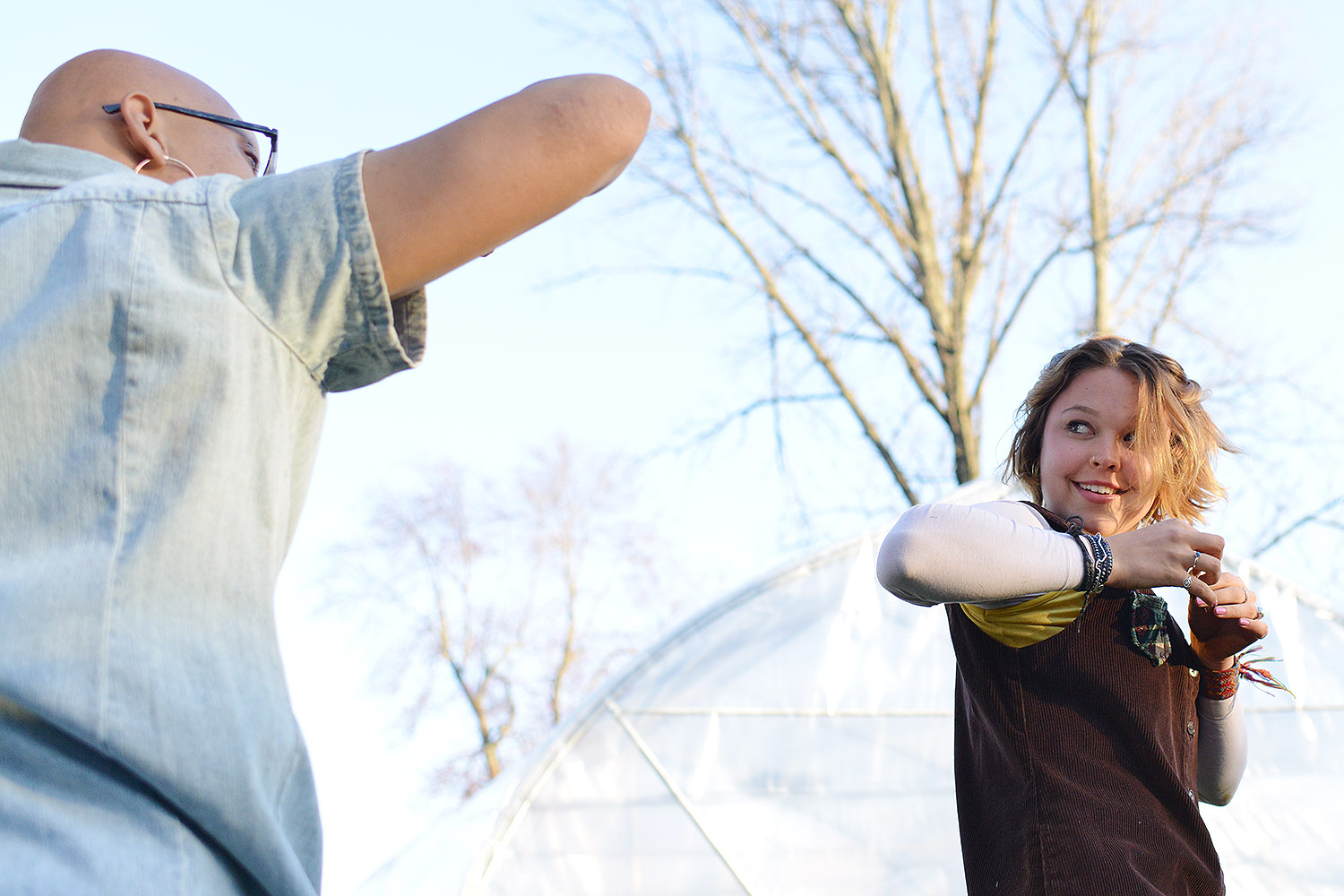
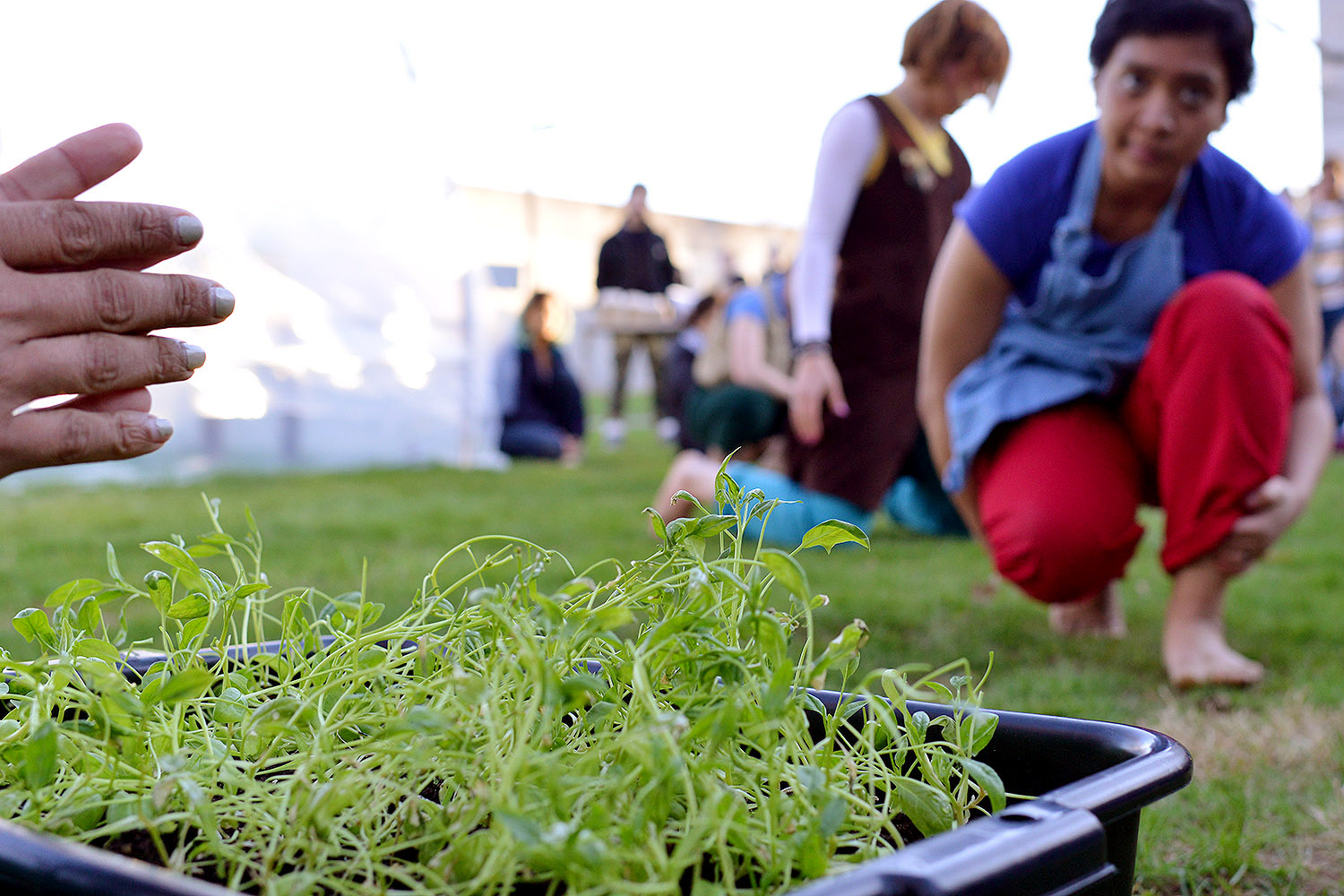
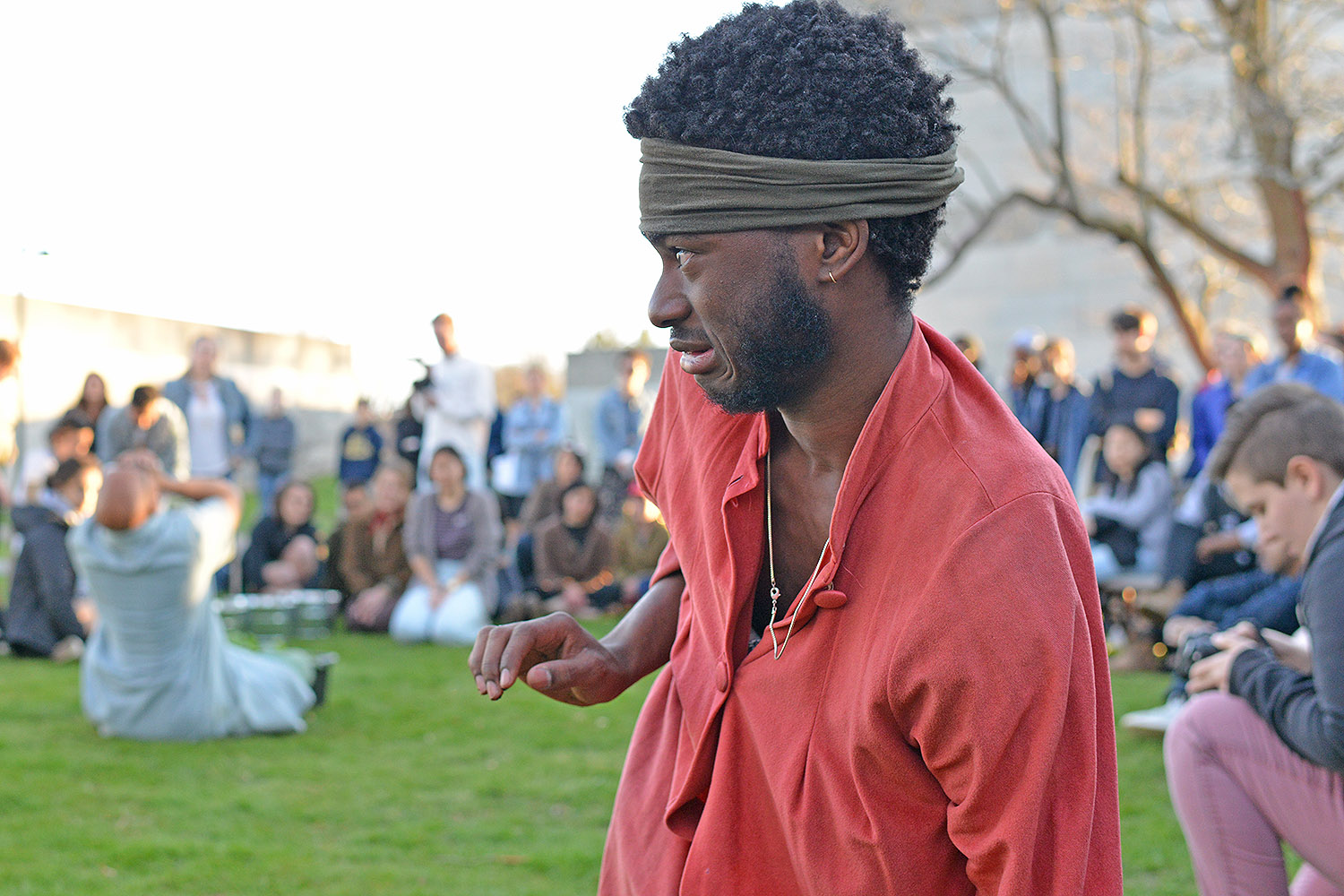
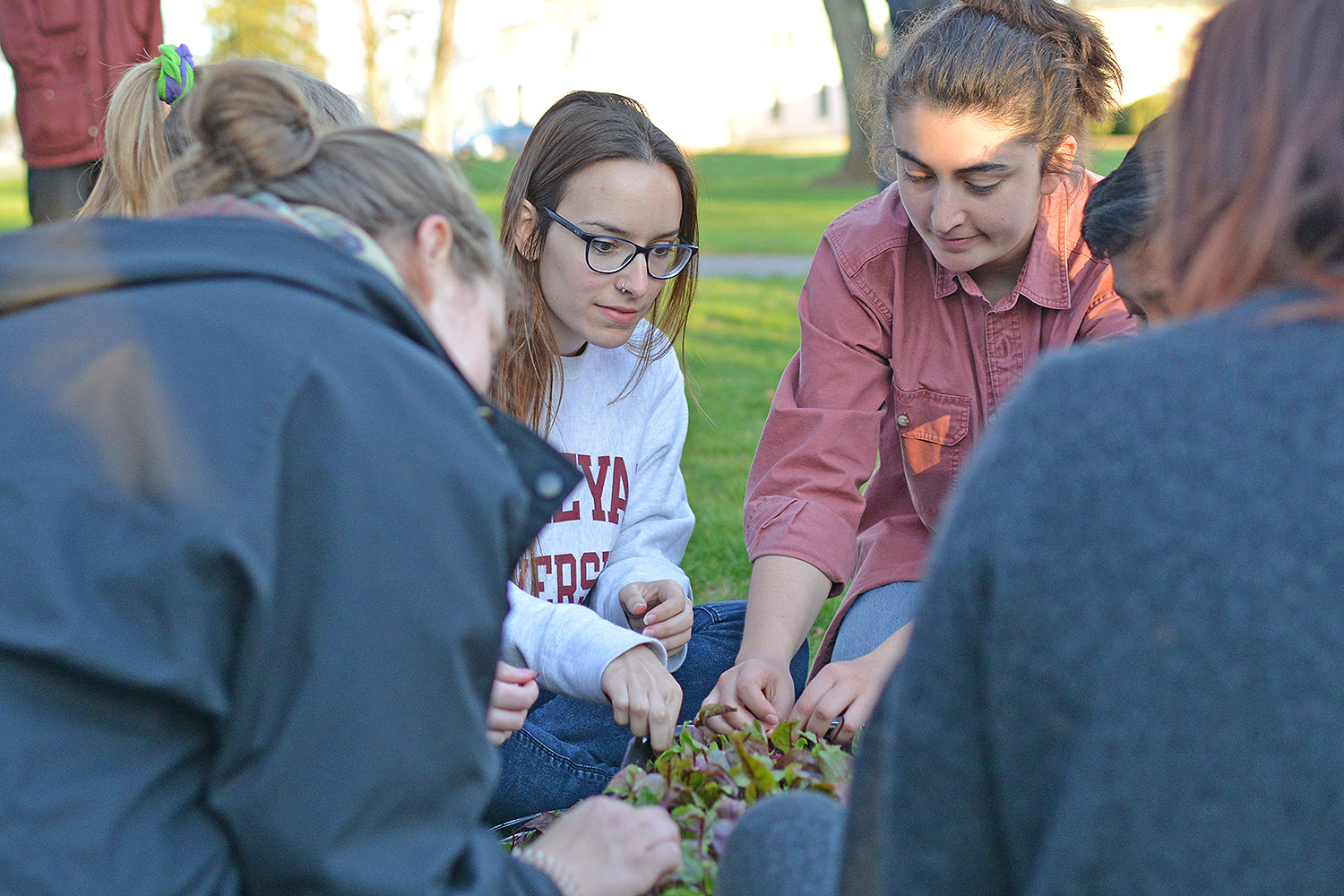
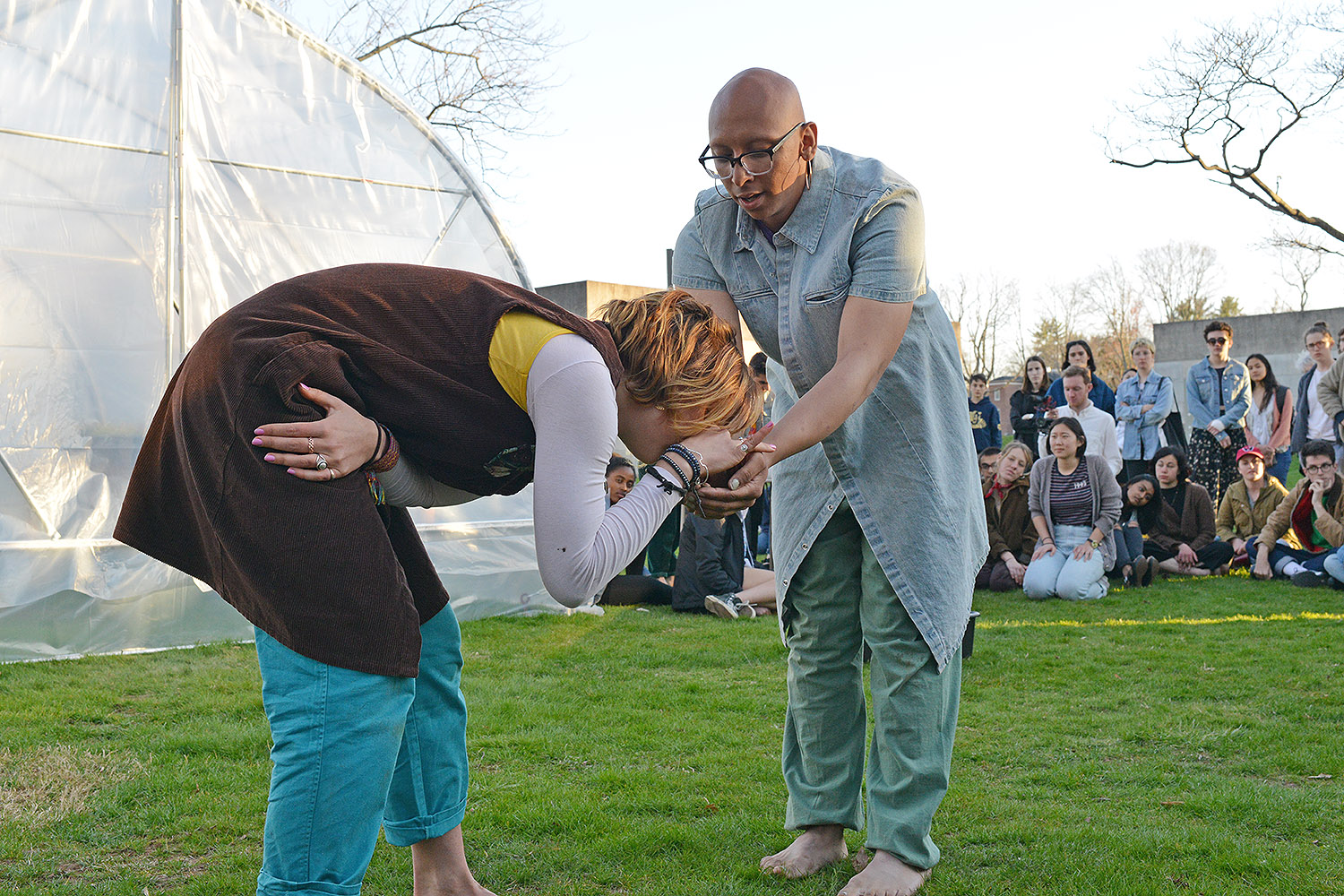
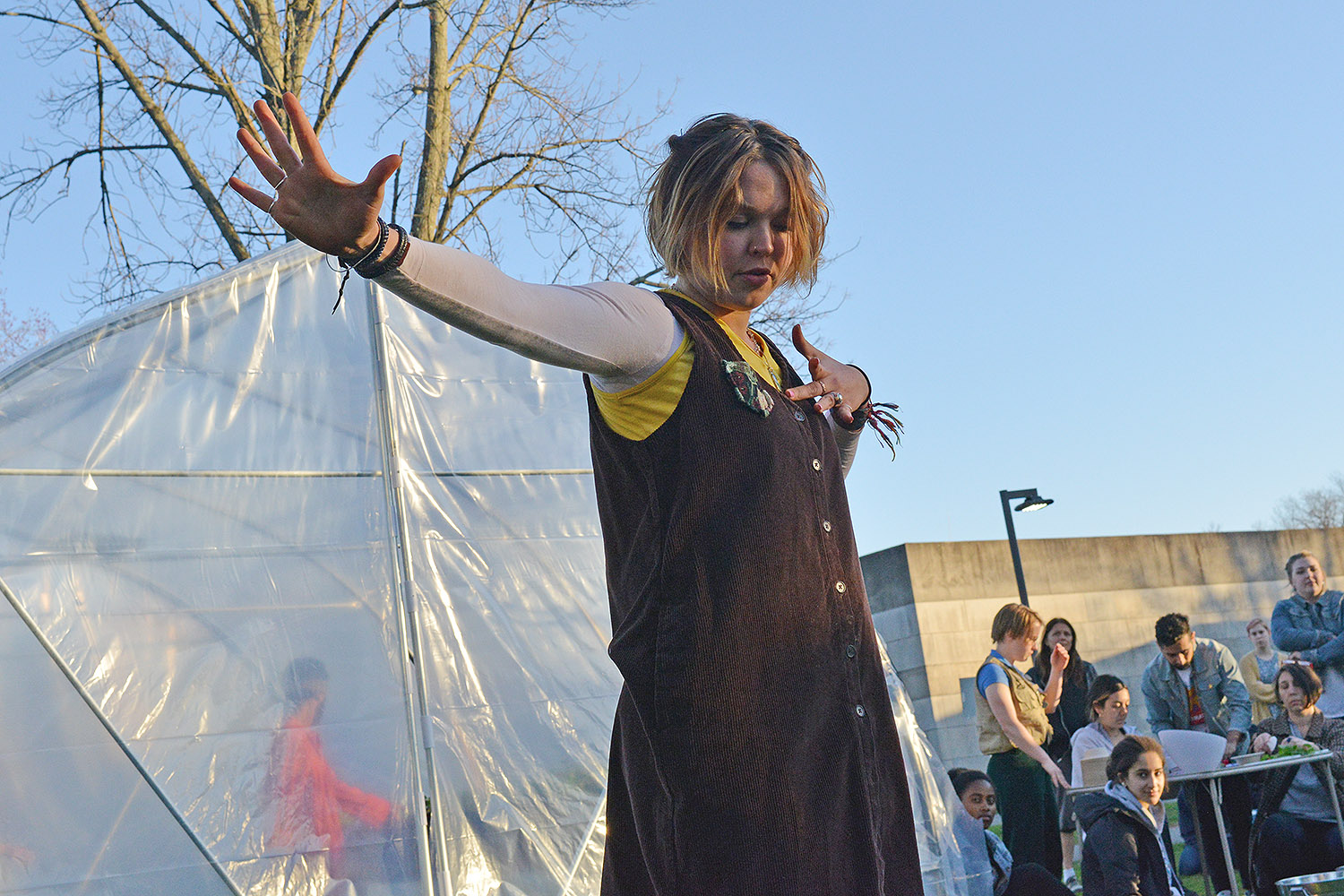
The event culminated with a spring harvest and Earth Day celebration inside the greenhouse.
After the gardening season, Paterson will donate the greenhouse to Wesleyan’s Long Lane Farm. “By donating the greenhouse I am able to extend the process of the project past the final performance—by continuing to use the structure, the tendrils of connection and process transcend the ‘conclusion’ of the project,” she said.
